

AW 25/26
PR Ê T- À -PORTER EDITION
“Threads of gorizon”
East/West Collection



AW 25/26
PR Ê T- À -PORTER EDITION
“Threads of gorizon”
East/West Collection
1. Regulars : Editor,s Letter
2. Artistry Unveiled: Delve into the world of art, from contemporary galleries to hidden gems, with interviews and analysis of creative trends.
3. Fashion Narratives: Deep dives into fashion, from the runway to behind the scenes, with interviews and analytical articles.
4. Voices of Visionaries: Essays and opinions from experts, producers and models on the creative processes and philosophy of fashion and art.
5. Artful Escapes: Journeys to unique places where fashion and art meet.
6. Editor’s Picks: Editor’s picks that focus on current and interesting topics in fashion and art.
7. Accent Spotlight : yours moments of inspiration. A section where you will find exclusive jewelry, accessories and art objects from small brands that will add style and personality to your look.
Enjoy your reading...

Scan & Listen our playlist for WEST






EDITOR’S LETTER
EAST & WEST: Between Silk and Steel.
AZZEDINE ALAÏA AND SHIRO KURAMATA: A Transparent Dialogue Between Fashion and Design.
MARIANO MORENO: Couture Meets Architecture.
GRANADA: Where East Meets West.
MATTIOZZI: Inspiration of Italy in Every line.
PARIS FASHION AIR: The Art of the Unseen.
LE STUDIO YVES SAINT LAURENT: Where Fashion Comes to Life.
LES FLEURS D‘YVES SAINT LAURENT Flowers That Tell Stories.
STORIE VENEZIANE BY VALMONT: The Art of Fragrance.
AUGUSTE RODIN: The Sculptor Who Breathed Life into Stone.
BALZAC AND RODIN: Fashion, Art, and the Immortality of Sculpture.
EUGÈNE DELACROIX: A Journey That Transformed Art.
ART THAT SHINES: The Energy, Style, and Boldness of Anastasia Yanchuk.
PARIS FASHION AIR Еxibithion.
ECHOES BY MARINA FEDAN: Fashion, Art & Architecture.
VOICES OF VISIONARIES
EAST AND WEST: A Timeless Dialogue in Fashion.
YSL BABYLON: The Gallery of Literary Elegance.
The West is a hymn to elegance, innovation, and timeless artistry. From Paris to Barcelona, from Venice to pastoral landscapes, this collection captures the soul of the West, inspired by its rich artistic heritage and modern sophistication.
The YSL Museum in Paris takes center stage in this vision, presenting a collection of dresses inspired by his legacy. These designs blend the refinement of Parisian fashion with the cultural echoes of the East, creating a bridge between two worlds.
Paris continues to inspire through its iconic institutions. The Delacroix Museum tells a story of passion and inspiration born from his journey to Morocco, where the colors and energy of the East transformed his art. The Rodin Museum, with its sculptures of strength and grace, adds depth to the creative story of the West. Barcelona brings its own dynamism. Designers craft dresses inspired by the architectural masterpieces of Gaudí, where every line and form reflect the natural harmony and boldness of modernism.
And, of course, Venice. The Storie Veneziane collection by Valmont breathes life into this city through seven fragrances, each telling its own unique story. The freshness of citrus, the velvety musk, and the warmth of woody accents turn these fragrances into masterpieces that transport you to Venice’s enchanting canals.
The West is also a story of Yves Saint Laurent’s floral inspirations. The Paris Museum conveys the refined aesthetics of spring and summer, where gentle lines and tones highlight the harmony between tradition and modernity.
This edition embodies the Prêt-à-porter collection, where fashion meets art. Every page invites you to discover a new dimension of the West, savor its elegance, richness, and inspiration. Welcome to a world of eternal beauty and harmony.
Best regards,
Marina Geisler-Fedan Founder and Editor



ehind the doors of the haute couture house at 5 Avenue Marceau lay a sacred space – Le Studio, the heart of creativity where Yves Saint Laurent worked his magic for over thirty years. It was here that his genius transformed fleeting ideas into iconic masterpieces that reshaped the world of fashion.
Le Studio was not just a workspace; it was a sanctuary of creation. The room was devoid of unnecessary adornments, focusing entirely on the essence of design. A bright, minimalist space with a full-length mirror became not just a tool but a partner in the creative process. Yves used the mirror to see what the client would see – the perfect fit, the elegance of movement, and the beauty of each design.
Every masterpiece began humbly with a “toile” – a prototype crafted from plain cotton fabric. This blank canvas embodied

the designer’s vision, evolving from sketches into a flawless garment. Every detail, from the drape to the silhouette, was meticulously refined. The garment was then fitted on a mannequin, step by step transforming into a creation worthy of the runway.
The walls of Le Studio housed a treasure trove of ideas: books, magazines, sketches, and artistic references collected by Yves throughout his career. This intellectual archive reflected his endless thirst for inspiration, drawing from art, architecture, history, and cultures from across the globe. It was here that timeless designs took root, infused with the genius of diverse influences.
While Yves Saint Laurent was the visionary, Le Studio was a hub of teamwork. Six to seven trusted collaborators worked alongside him every day, transforming his visions into reality. Each morning began with discussions and task assignments, turning the studio into a laboratory of fashion where every stitch and every decision carried immense significance.
Today, Le Studio is part of the Yves Saint Laurent Museum in Paris, where visitors can immerse themselves in the creative energy that once filled this space. The simplicity of the studio stands in stark contrast to the grandeur of haute couture, underscoring the idea that greatness is born in focus and quiet dedication.
Le Studio is more than just a room; it’s a symbol of a time when fashion was art, when every seam didn’t just bind fabric but told a story.
text Marina Geisler-Fedan





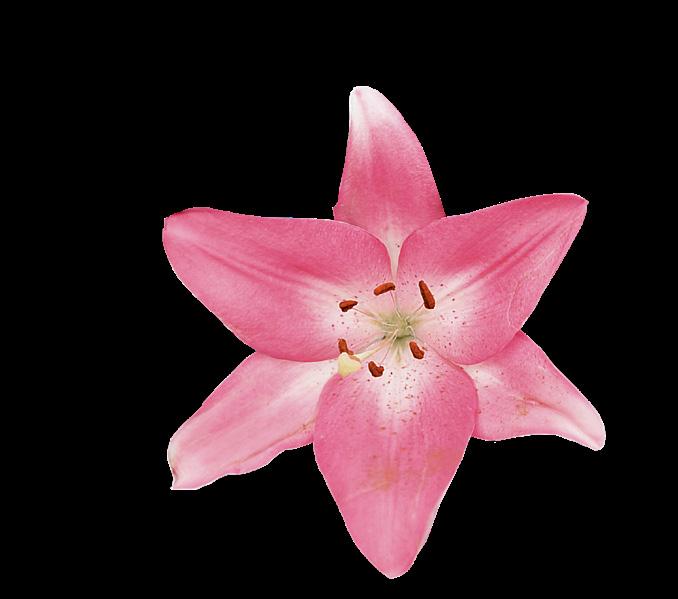


hen fashion becomes art, it gains the power to speak to us. Les Fleurs d’Yves Saint Laurent tells the story of flowers—symbols that come alive in fabric, adorning dresses with unparalleled elegance. Each piece is more than a garment; it is a painterly composition where nature and fashion converge to create something extraordinary.
Bright yellow gowns with pink and green floral patterns transport us to carefree summer gardens, brimming with life and light. A blue dress adorned with delicately embroidered roses seems inspired by Renaissance paintings, where every petal tells a story.
Saint Laurent designed his collections with women who sought to be bold yet elegant in mind. He had the talent to emphasize individuality through intricate forms that leave the impression of a living painting on silk.
Saint Laurent’s creative process reveals his search for inspiration in nature. A box of artificial flowers, which the designer used as studies for his dresses, shows how nature became his muse. His workspace, filled with sketches, embellishments, and fabrics, unveils the magic of creating his timeless designs.
These details remind us that fashion is a meticulous process, where every line and every element requires care and attention.
Behind each of Yves Saint Laurent’s masterpieces lies a sketch—a drawing where his inspiration first took form. His graphic work is filled with freshness and elegance. Thin pencil lines and watercolor strokes give life to designs that later become iconic.
Saint Laurent’s sketches are not just technical drawings; they are living poetry. A portrait of a woman wearing a crown of crimson leaves, for example, conveys her strength, grace, and vibrancy. These sketches show how beauty can begin with simple yet expressive strokes.
Alongside the sketches are fabric samples carefully chosen by Saint Laurent him -
Scan the QR code to access the
self. Swatches of bright pink silk attached to sketchbook pages reveal his attention to detail and love for texture, bridging the gap between imagination and reality.
A SYMPHONY OF ROSES AND PEONIES: ICONIC PIECES
A red gown with rich floral motifs seems to embody passion and intensity. It is a symbol of strength and romance, showcasing fashion’s ability to convey deep emotions.
A flowing blue dress adorned with embroidered roses highlights another side of Saint Laurent’s work—refinement and timelessness, always open to new interpretations.
And, of course, there is the gown with abstract flowers on a pale pink background. It is an ode to lightness and serenity, reminding us of how nature inspires us to embrace life with ease and freedom.
FLORAL ACCESSORIES: COMPLETING THE LOOK
Flowers were not confined to fabrics alone. Saint Laurent skillfully added dimension and texture through accessories. Artificial roses, peonies, and anemones, used in embellishments, transformed each outfit into a complete work of art.
CONCLUSION: WHEN FLOWERS SPEAK THE LANGUAGE OF FASHION
Les Fleurs d’Yves Saint Laurent is more than just a collection of garments. It is an invitation to see how fashion becomes poetry. Flowers on silk, hand-embroidered petals, and daring color combinations remind us of how inspiring fashion can be. Sketches, accessories, and dresses not only showcase Saint Laurent’s craftsmanship but also reveal his soul. His creations inspire us not only to admire beauty but also to reflect on the importance of details. Each line, each petal, and each fabric turns dreams into reality. The feeling that every petal on a Saint Laurent dress whispers its own story makes his work timeless and flowers an eternal part of his legend.
text Marina Geisler-Fedan




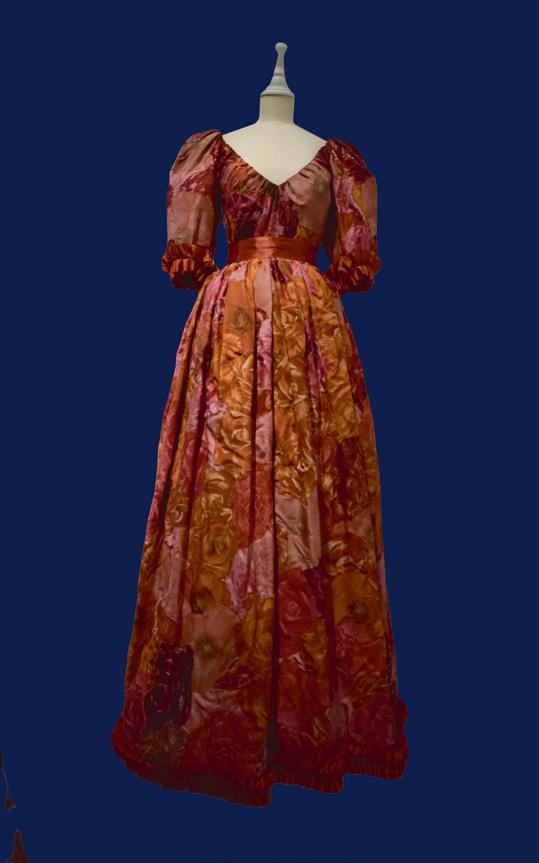











Stepping into YSL Babylon feels like entering an art gallery where the masterpieces are bound in ink and paper. This is no ordinary bookstore—it is a curated sanctuary where literature, fashion, and art intertwine, creating a space as refined and visionary as Yves Saint Laurent himself.
The scent of aged paper and fresh print lingers in the air, mingling with the soft rustle of pages turning. Shelves rise like gilded frames in a museum, each book a portrait of creativity—fashion archives, art manifestos, poetic musings, and rare collector’s editions. Every spine tells a story, a brushstroke on the canvas of culture.
I pause before a book on haute couture, its cover embossed like the delicate embroidery of a Saint Laurent gown. In the hush of this elegant retreat, time slows, and I become a spectator in an exhibition of ideas—where words are as powerful as paintings and style as eternal as art.
YSL Babylon is more than a bookstore—it is a literary gallery, a museum of inspiration where the pages whisper of beauty, innovation, and the timeless rhythm of Parisian elegance.
text Marina Geisler-Fedan



SCULPTOR AUGUSTE RODIN

It’s HARD to imagine the art world without the name AUGUSTE RO -
DIN . His sculptures are more than mere CREATIONS—they are stories frozen in bronze and marble. RODIN didn’t follow the established rules; he broke them, crafting something entirely new—ART that moves, shocks, and INSPIRES.
Young Auguste, born in 1840 in Paris, wasn’t an exceptional student. Yet from an early age, he displayed a rare passion for drawing. His first sketches at the École Gratuite de Dessin already held the sparks of genius that would later ignite into a blazing flame. But the road to recognition was far from easy. One of his first notable works, The Man with the Broken Nose, perplexed critics. At the time, they weren’t prepared to accept a portrait of a poor man whose true beauty lay in honesty and realism, rather than in idealized features.
Everything changed after a trip to Italy in 1875. Rodin experienced an artistic awakening, inspired by the grandeur of Michelangelo. “Antique heritage is a lesson in freedom,” he would later say. Upon returning, he created The Age of Bronze, a sculpture so lifelike that its realism led to accusations that Rodin had used molds taken directly from a live model. These controversies only fueled his growing fame.
Among his masterpieces, The Thinker stands out—a man deeply absorbed in his thoughts yet brimming with strength. This sculp-
ture became a symbol not just of Rodin’s work but also of the philosophy of humanity itself. The monumental project The Gates of Hell, which occupied Rodin for 37 years, was the crowning achievement of his career. This colossal composition, teeming with human emotion and turmoil, included iconic figures such as The Kiss and The Three Shades. Each piece encapsulates feelings that resonate universally.
One of Rodin’s most significant—and controversial—works was the sculpture Honoré de Balzac. Devoting seven years to its creation, Rodin immersed himself in the life and legacy of the great writer. However, it wasn’t just Balzac’s personality that captivated him; the clothing in the sculpture became a key element of its composition. Rodin sought not simply to portray Balzac’s cloak but to infuse it with symbolic meaning. His innovative approach to fabric defied convention. Instead of smooth, idealized surfaces, the cloak was crafted with heavy folds that seem to breathe and flow. This drapery became a metaphor for Balzac’s genius—its weight and grandeur reflecting the writer’s spirit and intellect. The dynamic texture of the cloak conveys a sense of movement, as if embodying the vitality of Balzac’s ideas. At the time, critics failed to understand Rodin’s vision. The Literary Society, which had commissioned the sculpture, rejected it. Yet today, Honoré de Balzac is celebrated as one of the most revolutionary sculptures of its era. Rodin’s treatment of the drapery remains an inspiration for contemporary artists and fashion designers alike, who see in it the fusion of form, texture, and meaning.
A pivotal part of Rodin’s life was his relationship with his student and muse, Camille Claudel. Their romance was as passionate as it was tumultuous, and Camille inspired some of his most iconic works, including The Kiss and Eternal Springtime. Yet, their bond, while artistically fruitful, was personally destructive.
Rodin passed away in 1917, leaving his works to the state. His creations are not just sculptures but an enduring philosophy rendered in material form. Each of his subjects, whether Balzac or a Cambodian dancer, breathes with life, emotion, and profound truth. “Art is a lesson in sincerity,” Rodin once said. True to his words, he poured his thoughts and feelings into every piece. Rodin’s work continues to live and inspire. It challenges us to reflect on ourselves, our world, and the essence of being human. His art is poetry that speaks to us in the eternal language of stone and bronze.
text Mandrik Maria
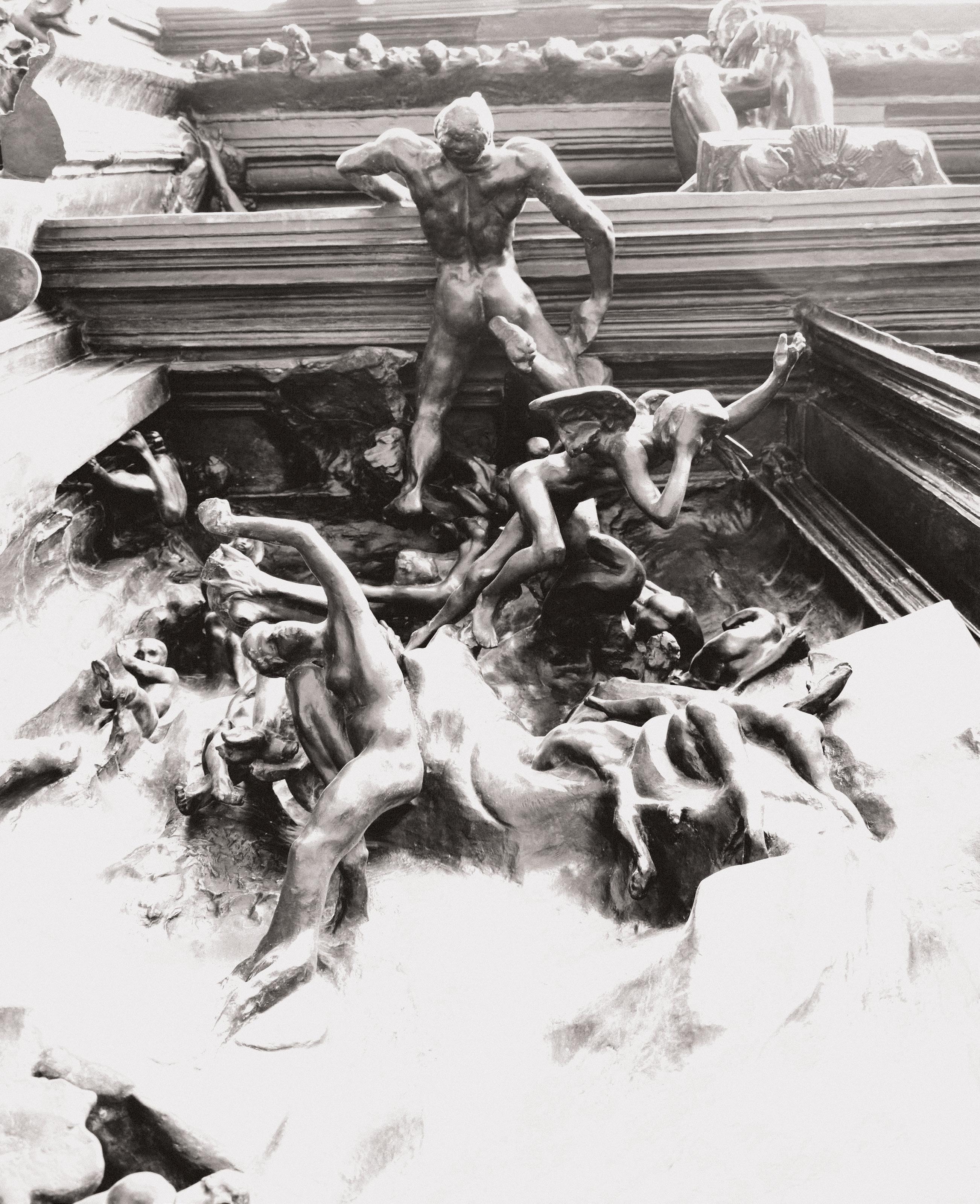
SCULPTOR AUGUSTE RODIN “THE GATES OF HELL 1880-1917”


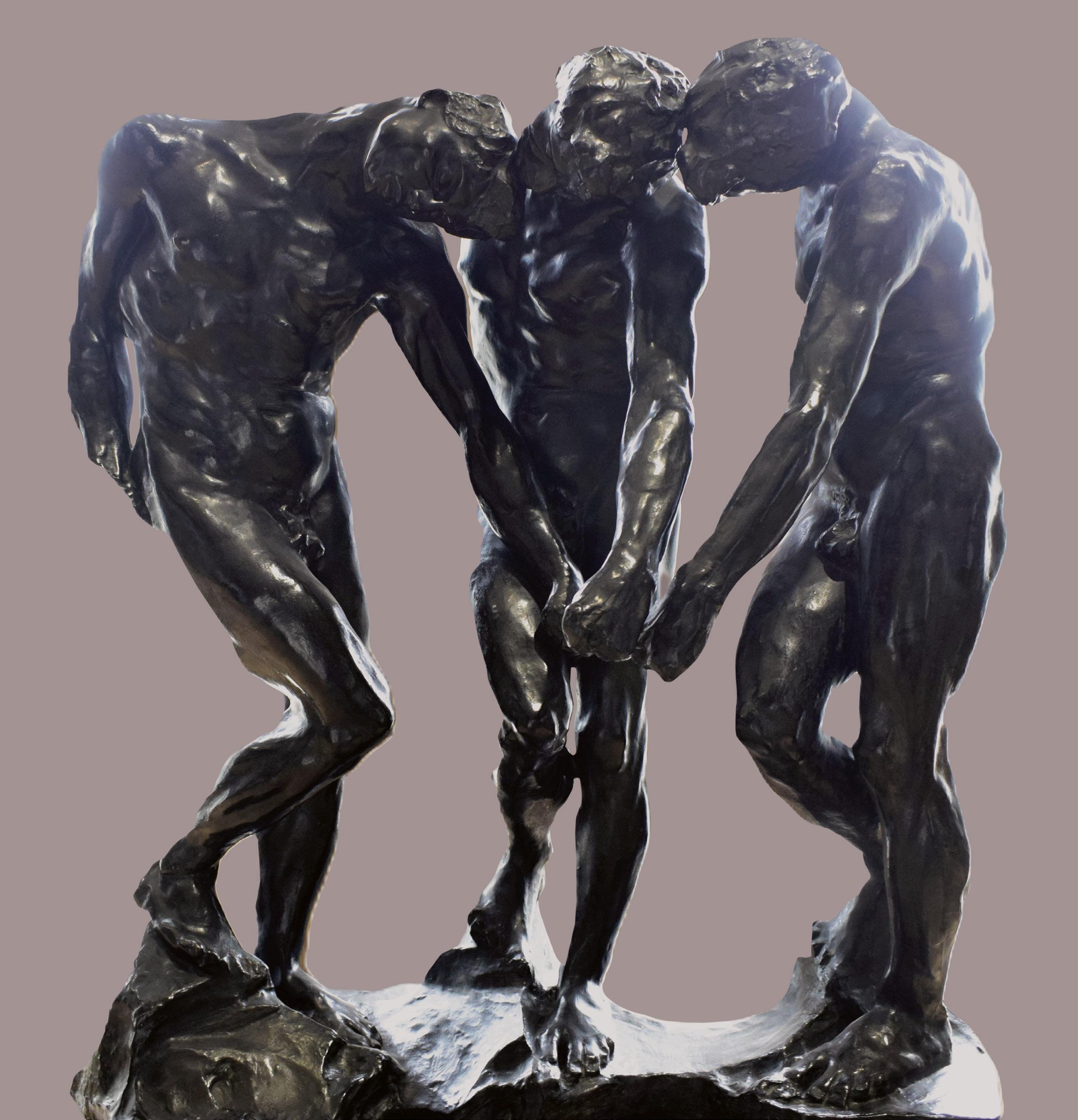
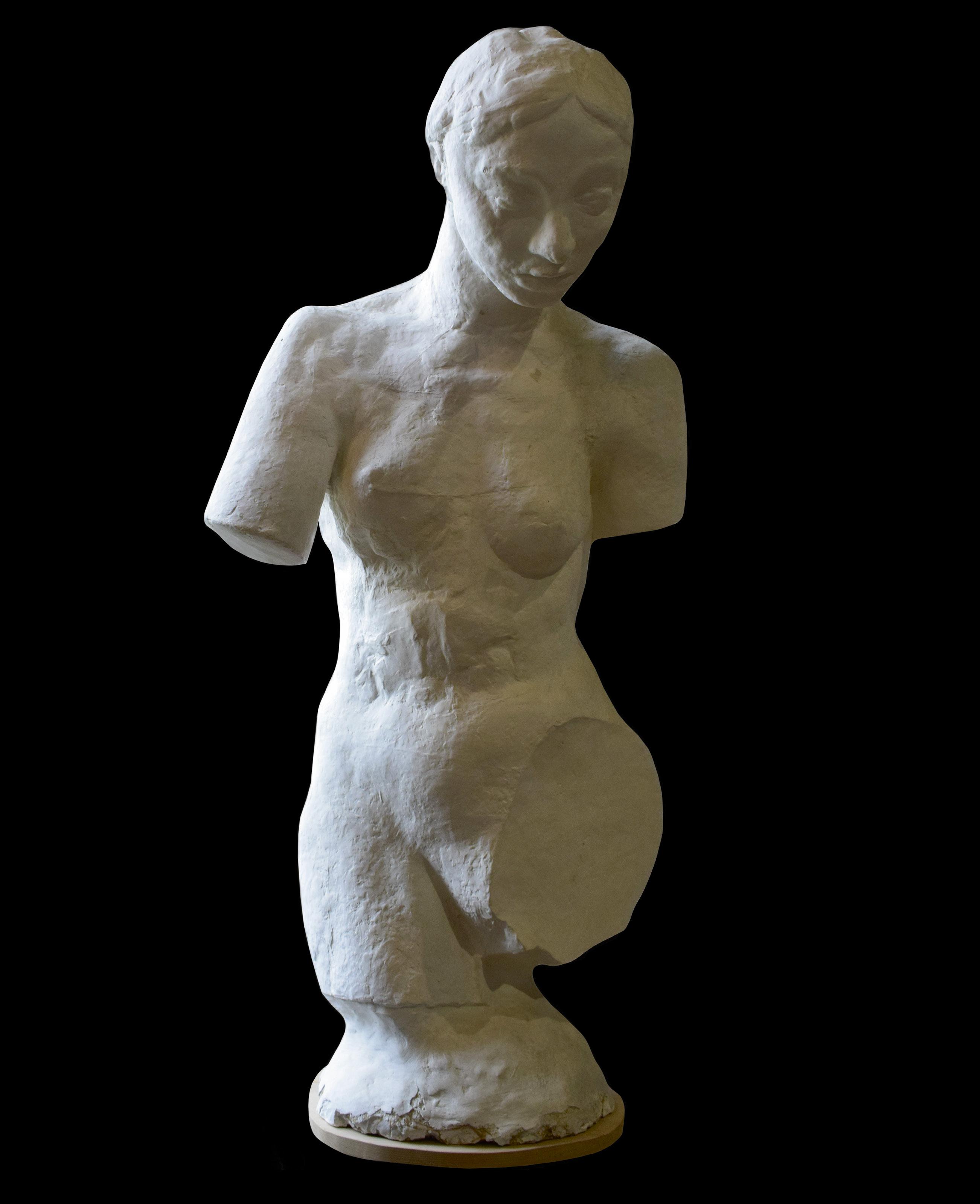


For your thoughts...



The story of Auguste Rodin’s creation of a sculpture of Honoré de Balzac is a tale of how art can bridge the past and present, uniting literature, fashion, and sculpture. The writer, whose pen gave life to La Comédie Humaine, and the sculptor, who created timeless forms, came together in the pursuit of truth and immortality.
BALZAC: THE WRITER AND THE AESTHETICIAN
Honoré de Balzac, whose romantic outlook was paired with sharp realism, paid special attention to detail, especially in fashion. He saw clothing not merely as part of one’s appearance but as a reflection of social status and mood. “Fashion,” Balzac once wrote, “is not just attire; it is the story of an era expressed through fabric.” His characters are often described through their wardrobe, allowing readers to understand their personalities on a deeper level. Balzac himself was devoted to refined aesthetics.
His famous robe de chambre became a symbol of his creative process. Practical and comfortable, it represented the image of a deeply focused genius immersed in his work.
In 1891, Auguste Rodin was commissioned to create a monument to the great writer. For Rodin, this task was a challenge. How could he capture not just Balzac’s physical form but his essence? How could he convey the depth of intellect and the passion for creation in bronze? Rodin’s work on Balzac’s image symbolized a revolutionary approach to art. He rejected conventional realism and sought a metaphysical embodiment. The monument, famously known as Robe de Chambre, became not just an image of the writer but an allegory of his ideas. Draped in a flowing robe, the sculpture communicates Balzac’s introspection, tranquility, and eternal thought.
Special attention was given to Balzac’s robe, which became the centerpiece of the sculpture. This robe de chambre was more than a garment; it symbolized the creative process, solitude, and genius. Today, this relic has been meticulously restored by textile experts, who studied every detail to preserve the authenticity of the 19th century. The restoration process, which recreated intricate patterns and fabrics of the era, demonstrated how fashion can be an integral part of historical heritage. “Each stitch recreated not just the garment, but the atmosphere of the time,” said the project’s participants.
In this project, fashion and sculpture became inseparable. By studying Balzac, Rodin created a monument that captures not only the writer’s physical presence but also his spirit. The restoration of the robe was an act of remembrance, symbolizing the connection between the past and the present. In this union of fashion and art lies the idea that clothing is more than just fabric. It is part of culture, a tool for self-expression, and a symbol of its era. Balzac understood this, and Rodin immortalized it in bronze.
Today, the robe de chambre and Rodin’s sculpture continue to inspire. This work is a testament to how fashion, art, and literature can create immortal images that reflect the complexity of human nature. Through his words and symbols, Balzac, and through his forms and lines, Rodin, showed how art can preserve memory and inspire future achievements. This is not just the story of a sculpture. It is the story of how fashion becomes art, and art becomes a way to understand time itself.
text Marina Geisler-Fedan
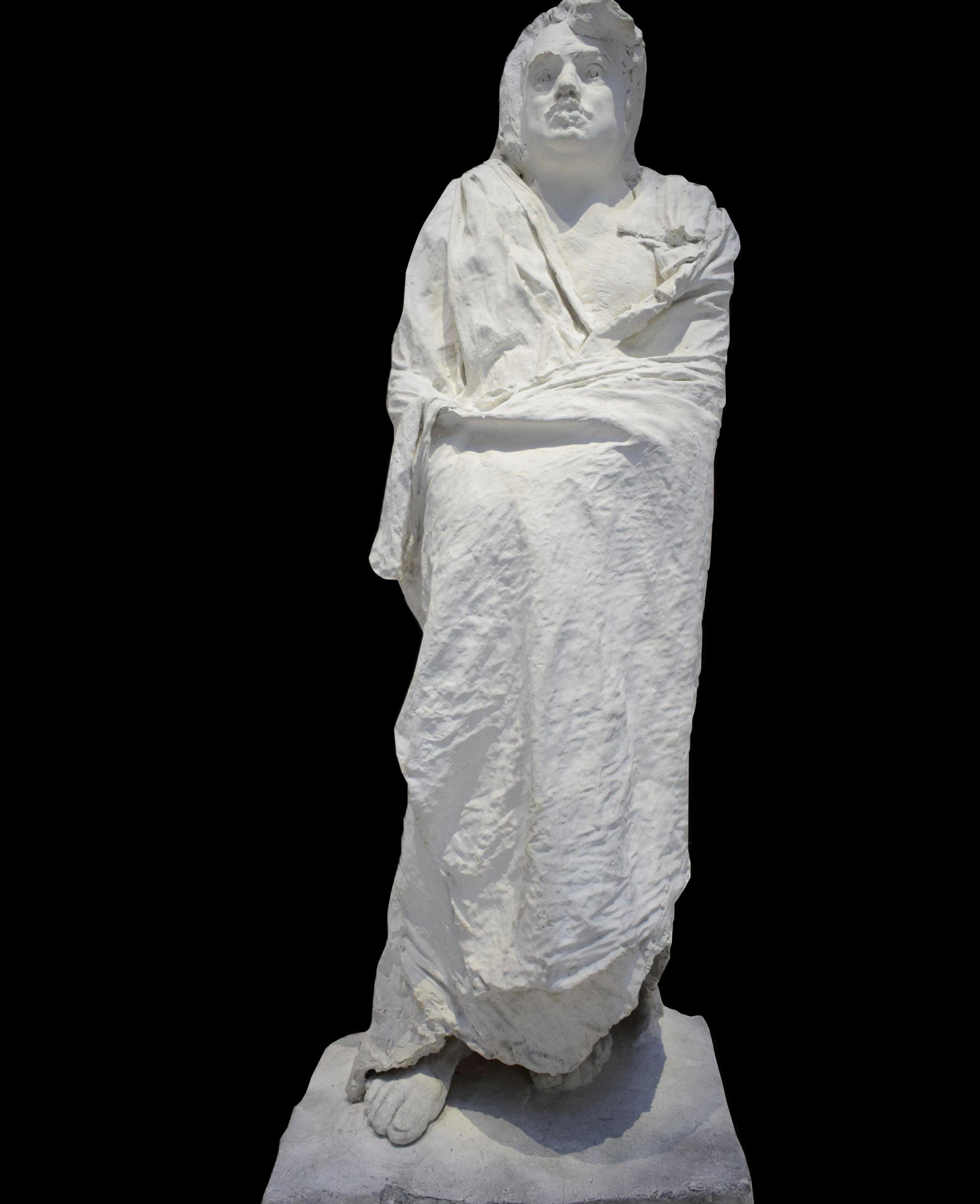




Venice is not just a city; it is poetry written with water and light. Every corner is steeped in mystery, and every moment unfolds like a melody.
The House of Valmont, a master of cellular skincare and haute perfumery, has captured the essence of Venice in its exclusive fragrance collection, Storie Veneziane. Inspired by the city’s unparalleled magic, Sophie and Didier Guillon created seven unique fragrances, each encased in an exquisite Murano glass mask — symbolizing artisanal craftsmanship and refined luxury. Each scent tells a story, evoking emotions and transporting you into the enchanting world of Venice. Seven Fragrances — Seven Facets of Venice.
VERDE ERBA I: THE DAWN OF HOPE.
Morning at the Sant’Elena pier. The crisp air carries the freshness of grass, the delicate scent of lilac seringa, and papyrus, while the warm sweetness of vanilla evokes serenity. Verde Erba I symbolizes the purity of nature and harmony. Like a watercolor painting, it offers a feeling of freedom and lightness.
ALESSANDRITE I: THE RHYTHM OF THE FUTURE.
The modern Arsenal pulses with energy. Jasmine, bergamot, and aldehydes compose a melody of change, inspiring the creation of something new. Alessandrite I is for those who embrace the future, see endless possibilities, and fear no transformation.
ROSSO I: MYSTERY AND PASSION.
The silent cloister of San Francesco Della Vigna. Ancient walls are wrapped in the lush aroma of blooming roses, their timeless mystery deepened by the warmth of oud, adding drama and intensity to the composition. Rosso I is for those who dare to unleash their inner strength and live life with fierce passion.
GAGGIA MEDIO I: THE WARMTH OF THE SETTING SUN.
Sunset in the alleys of Dorsoduro. Warm stones beneath your hands, soft amber, sandalwood, and cardamom wrap you in a sensual cocoon of coziness. Gaggia Medio I is for those who find joy in the present moment, a fragrant reminder of the beauty of simply being here and now.
BLU COBALTO I: THE TEMPTATION OF THE NIGHT.
San Moisè, illuminated by the opulence of evening lights. Streetlights shimmer over velvet textures, while rich notes of patchouli, cocoa, and opoponax create an atmosphere of irresistible seduction. Blu Cobalto I whisks you away into the whirlwind of a Venetian carnival night—a melody of secrets calling you into the unknown.
MICA D’ORO I: RADIANT SPLENDOR.
The noonday sun turns the mosaics of St. Mark’s Square into golden brilliance. The air is infused with notes of saffron, musk, honeyed rum, and creamy vanilla — an intoxicating blend of refined luxury that echoes the grandeur of the past. Mica D’Oro I is an ode to Venice’s rich history, its splendor, and its eternal beauty.
ZAFFERANO I: A FRAGRANCE OF INSPIRATION.
The sunset paints the lagoon in golden saffron hues. Enveloped in the enchanting sweetness of saffron, bigaradier flower, oud, and vetiver, accented with sparkling spices, this fragrance ignites creativity. Zafferano I invites you to embrace self-expression, like a palette of colors in the vibrant San Polo market. Art in Everything: From Glass to Fragrance. >


Storie Veneziane is more than just a collection of fragrances—it is a masterpiece of craftsmanship. Each bottle is adorned with a hand-decorated Murano glass mask, transforming it into a true work of art. Didier and Sophie Guillon poured their souls into these fragrances, blending nature, science, and creativity into every composition. Each scent tells a unique story, awakening emotions and leaving a lasting impression. Legends That Come Alive on Your SkinStorie Veneziane is more than just perfume—it is a touch of eternity. A chance to embark on a journey without ever leaving your room. Let Venice come alive on your skin. Allow its legends to whisper their secrets to you. Storie Veneziane is waiting to become part of your story.
text Marina Geisler-Fedan
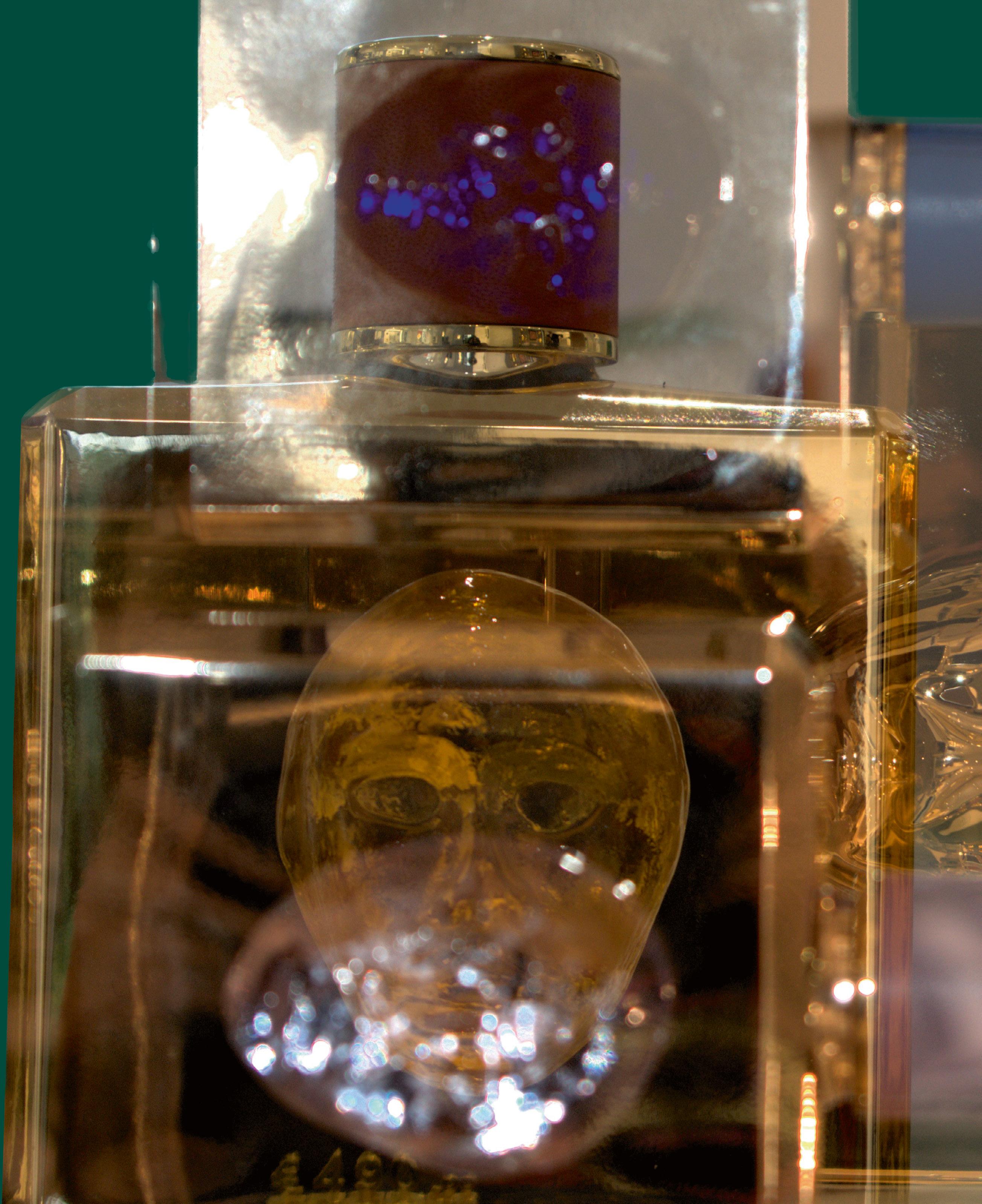
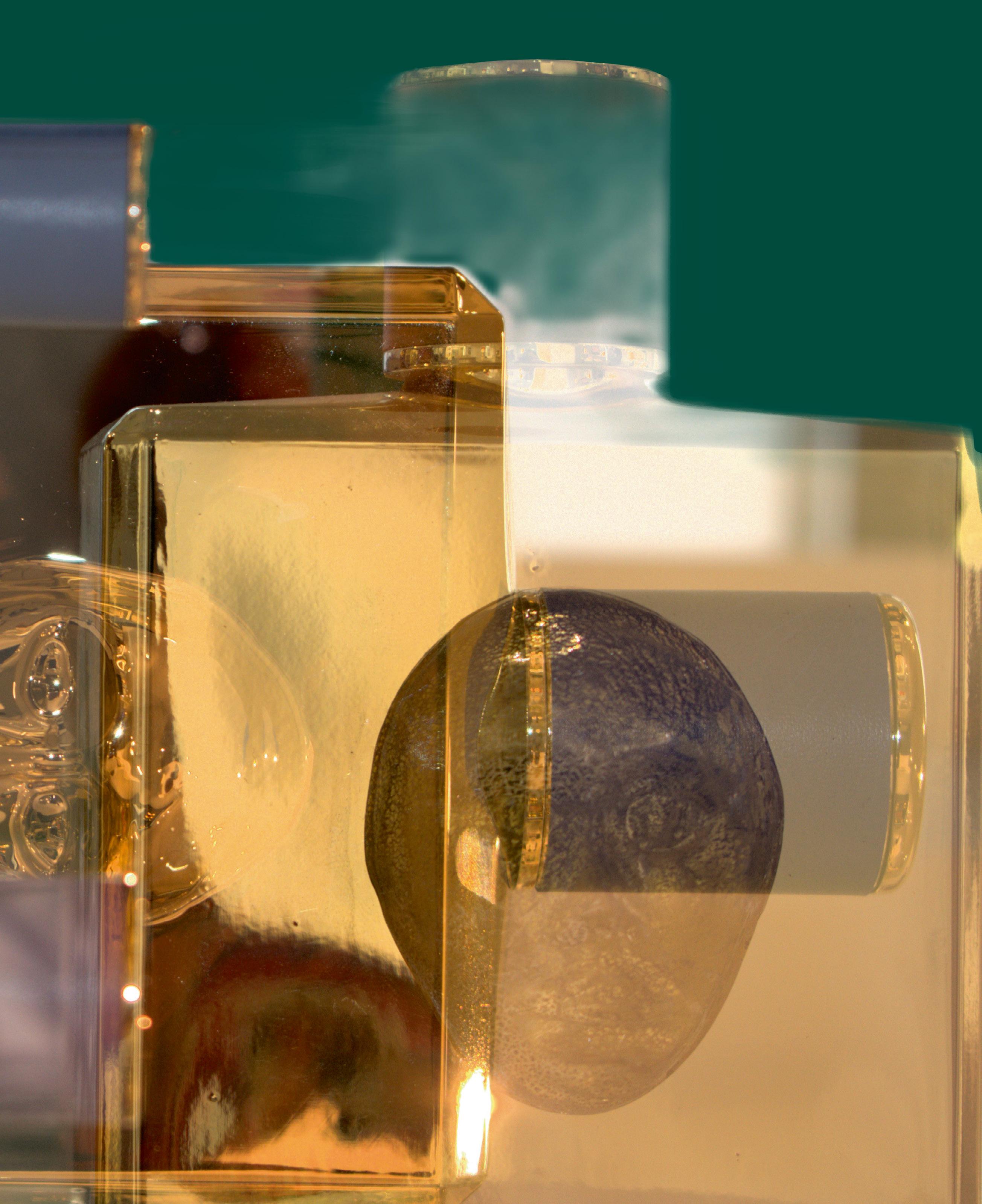

FONDATION AZZEDINE ALAÏA, PARIS

FONDATION AZZEDINE ALAÏA, PARIS
Walking through the halls of the Azzedine Alaïa Foundation in Paris, one cannot help but feel the presence of two creative spirits—Alaïa himself and Shiro Kuramata, the legendary Japanese furniture designer. Though their mediums were different, their shared vision of form, structure, and innovation transcended boundaries, creating a dialogue that resonates to this day. Azzedine Alaïa, known for his sculptural approach to fashion, often described his garments as “architectural.” He believed that a dress should not just adorn the body but celebrate its essence, emphasizing curves, movement, and strength. Similarly, Shiro Kuramata approached furniture design as a way to explore space and light, creating objects that challenged perceptions of solidity and functionality.
Kuramata’s furniture, particularly his “Glass Chair” and “Cabinet de Curiosités,” feels like the perfect counterpart to Alaïa’s designs. Both artists shared a fascination with transparency—not just in a literal sense but as a concept that reveals the beauty of what lies beneath. Kuramata’s use of acrylic and glass made his pieces appear weightless, almost invisible, much like Alaïa’s garments, which seemed to float effortlessly on the body while accentuating its structure. In a remarkable exhibition at the Alaïa Foundation, Kuramata’s transparent cabinets were paired with Alaïa’s archival pieces. The
juxtaposition was striking: the airy, ethereal quality of Kuramata’s furniture mirrored the precision and fluidity of Alaïa’s dresses. These cabinets, made from acrylic, housed fragments of Alaïa’s legacy—fabric swatches, sketches, and accessories — transforming the practical into the poetic. The transparent walls allowed vie-wers to peer into the heart of Alaïa’s creative process, echoing the designer’s philosophy of revealing inner beauty.
Both Alaïa and Kuramata shared a love for minimalism, though expressed in distinct ways. Alaïa stripped his designs of unnecessary embellishments, relying instead on clean lines and impeccable tailoring to create garments that celebrated the female form. Kuramata’s minimalist approach to furniture design aimed to challenge the very idea of materiality, as seen in his “How High the Moon” chair, constructed from steel mesh that seemed to dissolve into its surroundings.
The collaboration between these two artistic legacies felt natural. Alaïa’s atelier, with its clean lines and functional beauty, was the perfect backdrop for Kuramata’s work. Together, they demonstrated that whether in fashion or furniture, true artistry lies in the ability to blend functionality with emotion.
Alaïa’s love for diverse cultures often manifested in his designs, and Kuramata’s work brought a distinctly Japanese sensibility to their creative dialogue. The simplicity of Kuramata’s forms, rooted in the Zen philosophy of balance and harmony, complemented Alaïa’s bold, architectural approach. Their works stood as a testament to the universality of design: while Alaïa shaped fabric into timeless garments, Kuramata transformed materials like acrylic and glass into functional sculptures.
This meeting of East and West was not merely a fusion of styles but a celebration of shared values: respect for craftsmanship, an obsession with precision, and the desire to push creative boun-daries. Kuramata’s furniture became a stage for Alaïa’s dresses, and in turn, Alaïa’s designs highlighted the emotional resonance of Kuramata’s work.
The exhibition at the Azzedine Alaïa Foundation is more than a display of furniture and fashion—it is a dialogue between two masters who understood that art has no limits. Kuramata’s transparent designs echo Alaïa’s belief that true beauty lies in what is revealed, not hidden. Together, they remind us that whether through a dress or a chair, art is about creating something that transcends the ordinary and connects us to something deeper.
As I left the foundation, I glanced back at one of Kuramata’s transparent cabinets, filled with Alaïa’s sketches and fabrics. It was as if the cabinet itself held not just objects, but the creative energy of two visionaries. In that moment, I understood: Alaïa and Kuramata did not merely create; they invited us to see the world—and ourselves—with new eyes.
text Marina Geisler-Fedan




FONDATION AZZEDINE ALAÏA STUDIO, PARIS




FONDATION AZZEDINE ALAÏA STUDIO, PARIS



FONDATION AZZEDINE ALAÏA STUDIO, PARIS

FONDATION AZZEDINE ALAÏA STUDIO, PARIS


FONDATION AZZEDINE ALAÏA STUDIO, PARIS


The 19th century. Paris. Bohemian salons are filled with the aroma of exotic incense, and the East becomes the new symbol of luxury. But for a young artist, Eugène Delacroix, the East is not just a trend—it’s a challenge. It’s a place where every shade of sunlight, sand, and sky tells a story of life unbound by the refined constraints of Europe. His journey to Morocco in 1832 was not just an expedition—it was an ode to the beauty and chaos of a world hidden from Western eyes.
Tangier greeted Delacroix like a whirlwind. The market streets buzzed with voices in dozens of languages. The endless sky seemed to compete in brilliance with the silken garments of the locals. Hues of pale green water, fiery red earth, and vividly patterned fabrics fused into a carnival of color. For the artist, this was a revelation. His sketchbooks quickly filled with scenes of bustling markets, silhouettes of women, and the intricate patterns on their clothing. “This isn’t just color—it’s emotion,” Delacroix wrote in his diary. He managed to capture in his sketches what words could not: the living energy of the East, its blend of freedom and chaos.
In the streets of Meknes, his pencil became a mirror of another way of life. Here, ceremonial grandeur and hidden beauty reigned. The simplicity of Moroccan daily life captivated him with its harmony. Even the danger he encountered—crowds of locals suspicious of a foreigner with a pencil—only heightened the
magic of these moments. His painting Street in Meknes emerged from these impressions, a poetic reflection of life under the scorching sun. But perhaps the most powerful moment of his journey came when Delacroix found himself in a private harem. It was a forbidden, almost mythical world. And this made his sketches all the more precious. They would later become the masterpiece Women of Algiers. This painting was not just a depiction of daily life but an entire universe, filled with soft curves, delicate fabric tones, and the unmistakable magic of the East.
Delacroix didn’t just see the East—he made it part of Western art. His works broke traditional boundaries, unveiling a world of vivid colors, light, and spontaneity to European audiences. They inspired artists, writers, designers, and perfumers to create new masterpieces. The East he brought back with him became an inexhaustible source of inspiration.
Today, fashion, art, and fragrance continue to incorporate Eastern motifs, paying homage to this great master. Every collection with touches of the East is a reminder that beauty transcends time.
Eugène Delacroix showed that inspiration knows no borders. His journey is not just a story of colors and shadows but a meeting of two worlds, where the traditions of the East and the innovation of the West merge into a harmonious melody of art. Rediscover this world. Breathe in its colors, feel its rhythms. Let the East become not just an inspiration but a part of your story.
text Mandrik Maria



MUSEUM DELACROIX, PARIS “COSTUMES DE TANGER (1832)”

MUSEUM DELACROIX, PARIS
“MAROCCAN HORSEMAN (1832)”
PHOTO MARINA GEISLER-FEDAN



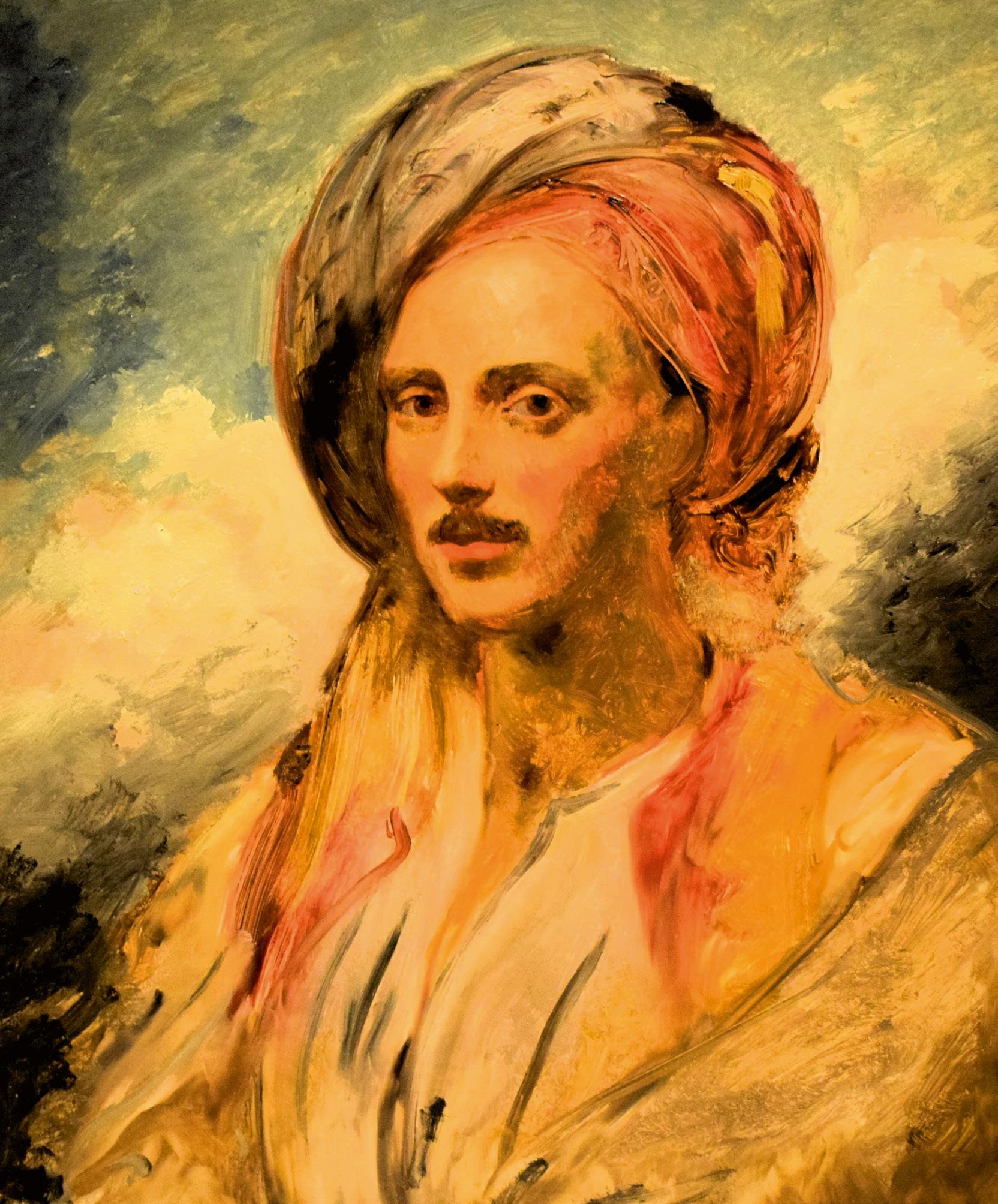
MUSEUM DELACROIX, PARIS
“MAROCCAN MAN IN A TURBAN(1832)”


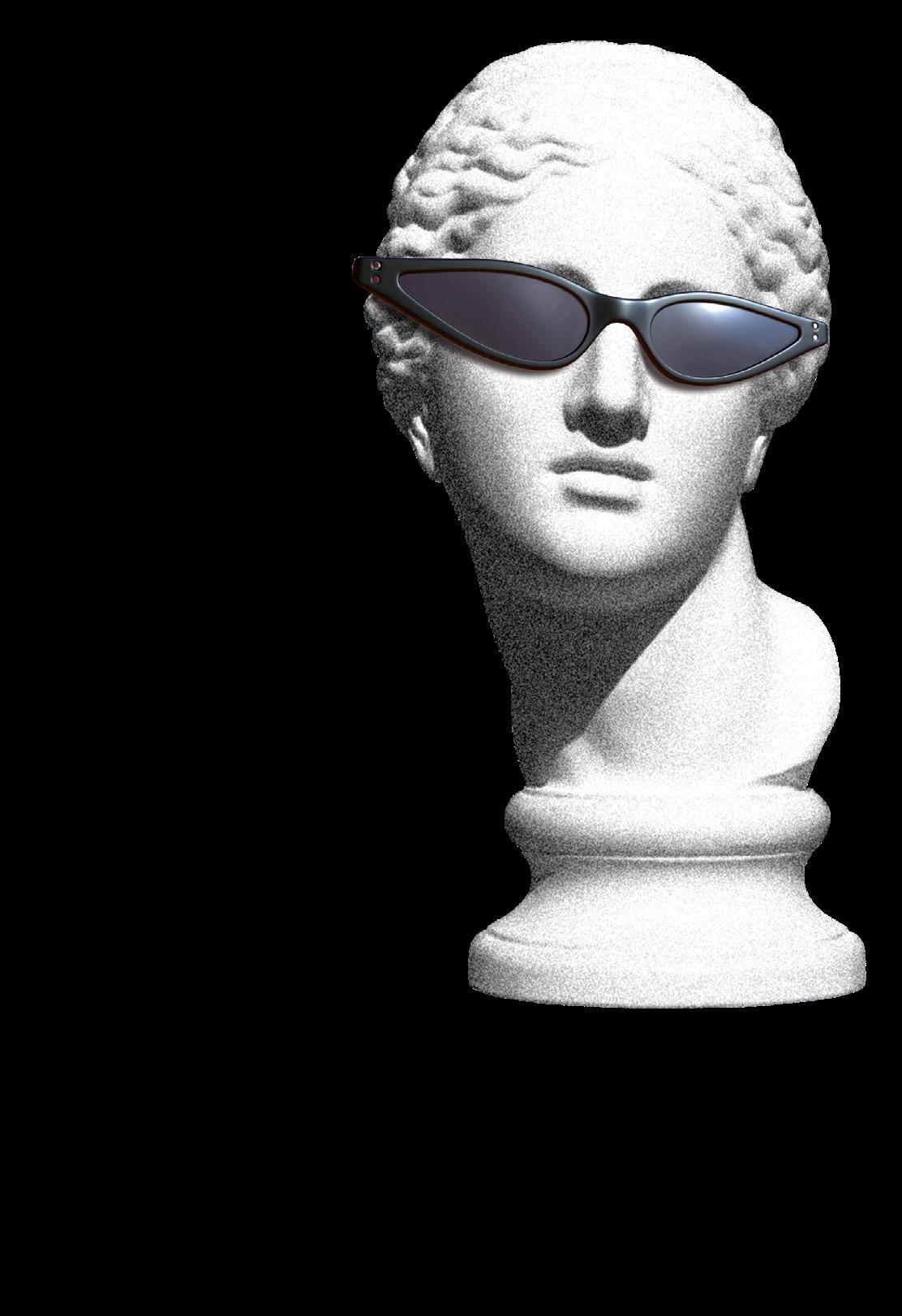

Winters are nice in Barcelona; it feels like the sun never leaves this city, and people have an entirely different approach to work.
This morning, we are meeting Mariano Moreno, a Spanish fashion designer best known for his bridal, cocktail, and haute couture dresses.
After nearly 15 years of experience working in the fashion industry—designing for global brands such as Givenchy, Lanvin, Chloé, Pronovias, and Rosa Clará—Mariano finally decided to launch his solo project in 2023. Just two weeks before his first Haute Couture runway show in Paris, we’ve made ourselves comfortable in his spacious and lavish atelier to talk about his connection to Barcelona and his journey in fashion.
You’ve been living in Barcelona while flying to Paris almost every week for work. Does the constant traveling ever make you feel disconnected, or does it keep you inspired?
I usually travel a lot to visit new clients or follow up on the designs I’ve created for each of them. It’s a fast-paced rhythm, as I’m used to being on a plane nearly every week, but it’s also an essential part of my work. For me, this movement isn’t just about logistics; it’s how I stay connected with the people I design for and their unique stories.
There’s something deeply inspiring about experiencing the diversity of both cities on a regular basis. Paris offers me refinement and timeless elegance, while Barcelona brings an innovative, creative energy that feels bold and free. These constant shifts between cultures and aesthetics feed directly into my work. So, while it’s a demanding lifestyle, it’s also incredibly rewarding. Traveling, for me, is not just part of the process—it’s one of the keys to my creativity.
Do you ever feel that Barcelona gives you something Paris can’t, or vice versa?
Of course, although my connection with both cities is different. Barcelona is where I have my creative base, my studio, and where I can truly shape my ideas. It’s a city that provides me with stability, inspiration, and the freedom to explore innovative concepts, thanks to its Mediterranean lifestyle and its unique blend of modernism and tradition.
On the other hand, Paris, although I don’t have a studio there, is where I connect directly with my clients and with the essence of classic, sophisticated fashion. My frequent trips to Paris keep me in touch with the level of refinement and demand that the city exudes, which elevates my perspective and pushes me to always strive for excellence in every design.
After designing for Spain’s top fashion houses for over a decade, what finally gave you the courage to start your own brand?

During over a decade of working for some of Spain’s top fashion houses, I had the opportunity to develop a wide range of skills, knowledge, and experience that were fundamental to my growth as a designer. Each project, each collection, allowed me to refine my technique and gain a deep understanding of how the fashion world works, from the conception of a design to its final execution.
Over time, I felt that I had built a solid foundation upon which to create something of my own. That’s when I decided to start my own business, confident that I had the solid experience to take the reins of my own project. The desire to apply everything I had learned and offer something that would bring my personal vision of fashion to life was what drove me to take that step. It wasn’t so much an impulsive decision, but rather a process that had been built over the years, with the confidence that I was ready to face this new challenge.
In just a year and a half, your label has expanded to include four distinct lines: prêt-à-porter, couture, bridal, and resort. How do you manage such diversity in your collections, and does it ever feel overwhelming to juggle so much at once?
What truly excites me is creating stories through each garment. For me, the most important thing is designing the most unique dress, one that tells a personal story and is absolutely exclusive for the person wearing it. The diversity of the collections didn’t overwhelm me, rather, it challenged me to maintain that vision: to offer unique, innovative, and sophisticated pieces in each line.
What I strive for is for each collection to have its own identity, while still maintaining that essence of luxury that becomes a true experience for the wearer. The key to managing so many collections is having clarity about what I want to achieve with each one and staying organized so that each project gets the attention it deserves. Although there are moments of a lot of work, the passion and commitment I have for my brand help me move forward. Each design is an opportunity to showcase something new and continue pushing the boundaries of what we can consider luxury in fashion.
The opening dress, inspired by Casa Batlló, is absolutely breathtaking. Can you walk us through its creation and what made it so special to include in this collection?
The inspiration for this dress comes directly from Gaudí’s work, as this collection aims to pay tribute to the architect in honor of the centenary being celebrated next year. The dress has been hand-embroidered with gemstones, a task carried out with great patience and dedication, carefully following the details of Gaudí’s creations. Every element of the design reflects the richness and complexity of his architecture, with the goal of capturing its essence in a unique haute couture piece. >



Capes and oversized lantern sleeves have become your signature. Why do these particular elements resonate so strongly with you, and how do they fit into this collection?
The capes and oversized lantern sleeves allow me to play with the silhouette and create a dramatic effect that adds movement and elegance to each piece. It’s all about drama! I love how they transform the figure, giving it an air of sophistication and freedom at the same time. In this collection, it’s all about the ability to transform the ordinary into something extraordinary. The capes became against my intention into the most iconic and sold pieces in my repertoire, so they well deserve been featured greatly in this collection! They are elements that stand out not only for their beauty but also for their ability to tell a visual story, something fundamental in my design philosophy.
Are these pieces a tribute to something personal, or are they more about pushing the boundaries of couture design?
This collection, titled “ARCHIVES,” is a tribute both to the personal and to innovation in couture design. It is inspired by my fascination with architecture, decorative arts, and materiality, reinterpreted through sculptural volumes, precise tailoring, and a meticulous selection of ornamental details. Through this collection, I merge architecture with haute couture, adapting materials and accessories from the architectural field to fashion, creating a harmony between both disciplines. At the same time, I aim to push the boundaries of haute couture, not only through shapes and techniques but also by offering an innovative vision of how fashion can connect with other forms of art. The set design, created for my debut in Paris, pays homage to the early haute couture shows, with an atmosphere of constructive nostalgia that celebrates the timeless elegance of fashion, creating a perfect connection between the past and the present.
You’ve spoken before about your love for artisanship. What role did local craftsmen, either in Barcelona or France, play in bringing this collection to life?
Local craftsmanship played a key role in bringing this collection to life. Although most of the accessories were made in the workshop and atelier in Barcelona, local artisans were essential in executing the intricate details in the embroidery and other ornamental elements. Their skill and dedication allowed me to bring to life a vision that merges haute couture with the art of architecture, resulting in a collection that reflects the excellence and talent of local craftsmanship.
The jewelry for the collection is stunning. Who designed it, and how does it tie into the overall vision of the show?
All the jewelry in the collection has been created entirely in collaboration with the artist and high jewelry designer Areta Mata, with great attention to detail and in line with the overall

vision of the collection. She best know by using natural stones and metals in her pieces, in a unique and stunning way. For example, we used Agatha stones in a specific design and earrings made with mini bricks, which were key in perfecting one of the dresses. This collaboration allowed us to add unique details that perfectly complement the architectural and artisanal aesthetic of the collection.
The wedding gown inspired by Sagrada Família is a showstopper. How did you incorporate its architectural elements into the design?
The wedding gown inspired by the Sagrada Familia is one of the standout pieces of the collection. For this design, I sought to capture the majesty and architectural detail of Gaudí, merging his unique style with the elegance and sophistication inherent in haute couture. I used dramatic volumes that evoke the organic, flowing shapes of the Sagrada Familia, such as the towers and columns that appear to grow from the base. Tulle was used to detail the exact shape of the prestigious church, creating a delicate yet precise effect that reflects the complexity and beauty of the structure. Additionally, the embroidery and appliqué were executed with meticulous precision, recreating the details found in the famous basilica but adapted to the femininity of the silhouette. This gown is not only a haute couture piece but also a tribute to Gaudí’s grand architectural work.
If you could translate any building into a couture gown, which one would it be and why?
Without a doubt, it would be the Brasília Cathedral by Niemeyer. It’s a stunning example of brutalist architecture that I truly love and believe perfectly follows the curvy shapes of the female figure. I greatly admire the architectural forms that Oscar developed in his work. I deeply respect his creations and would love to design some dresses inspired by them.
Two weeks before your first couture show in Paris, what’s going through your mind? Are you nervous, excited, or a mix of both?
To be honest. I’m so excited that I just can’t hide it…
This is my first time debuting in Paris during the grand Haute Couture SS25 fashion week, and I am incredibly excited to be doing so. It’s a unique opportunity, and I can’t wait to showcase the collection. I am very grateful for this incredible opportunity and for the hard work of my entire team in making it a reality. This collection has been created with a lot of love and dedication, and I am eager to see how the audience responds.
You’ve collaborated with artisans from Murcia, your hometown. What part of your heritage comes through in this collection?
We are all the result of our past. I was lucky enough to be born in a family with a rich architecture and constructive background that I put into the core of my collections. Beyond that I create and manufacture many parts of my dresses in my hometown Murcia, the south of Spain, and I do that because I truly believe in the know how and the beauty of the things made by them. It’s not everything about know how but also about empathy.
You’ve dedicated this collection to Barcelona—a city you’ve openly said you have both love and hate for. Can you tell us what that duality means to you?
It’s not just about Gaudí, but about the architecture, the decorative arts, and the materiality. That said, I have to admit I’ve always had a love-hate relationship with every single place I’ve lived. At 16, I moved from Spain to Australia, then to Germany, France, Canada, and Hong Kong. I even lived in Israel for quite a while. I know Russia very well too. What I mean is that the dynamic nature of movement keeps me alive! Living between two cities makes me feel very comfortable, though not many people would understand that. It nourishes my creativity and challenges me in ways that make me happier. I’d love to add more cities to my living situation, and I know I’ll love and hate them equally. It’s the contradiction of my creative approach to life.
text Ruslan EV








ome cities live in books, paintings, or the memories of travelers. But Granada lives in hearts. Every step here feels like a whisper from the past: the murmurs of Moorish palaces, the echo of flamenco in winding streets, the scent of leather workshops, and the warm Spanish sun, which seems to hold all this magic within its light. Granada is not just a city; it is a bridge between East and West, between history and the present.
The Alhambra, the heart of Granada, is more than just a palace. It is poetry in stone, a masterpiece where Islamic architecture and Andalusian soul intertwine. Entering the Court of the Lions, where water flows gracefully through marble basins, time seems to pause. Here, every breeze, every wall carving, every shadow on a column is art, crafted to inspire awe. Yet the Alhambra is not just about its architecture. It is a symbol of cultural fusion. When the Moors ruled Granada, the city became an oasis of art, science, and craftsmanship. Even after the Nasrid dynasty fell in 1492, this spirit endured. Muslim, Christian, and Gypsy traditions blended, creating a cultural tapestry unique to this place.
Granada’s craftsmanship tells its story just as vividly as its architecture. Strolling through the alleys of the Albayzín, I couldn’t take my eyes off the shop windows: the bright fajalauza ceramics in heavenly shades of blue, intricate taracea wood mosaics, and beautifully adorned leather goods with Arabesque patterns. These weren’t just souvenirs—they were living stories passed down through generations. In one workshop, I watched a craftsman delicately carve tiny pieces of wood, arranging them into intricate geometric designs. His hands moved with such precision and grace that it seemed he was dancing his own flamenco. I thought of the centuries it must have taken to preserve these skills, to bring them to life today. Here, every item is a tribute to history, a marriage of beauty and purpose.
If Granada is the crossroads of East and West, its most brilliant translator was Mariano Fortuny, the legendary designer born in this city. His works are a hymn to cultural harmony. Fortuny drew inspiration from classical Greece, Islamic calligraphy, Ottoman patterns, and Renaissance art. His creations were more than fashion—they were art. His iconic “Delphos” dress captured this spirit perfectly. Made from delicately pleated fabric and adorned with Murano glass beads, it embodied the grace of antiquity with a modern twist. This dress could just as easily clothe a goddess from ancient myth or a self-assured woman in the early 20th century.
Granada continues to inspire today. Contemporary designers like Pilar Dalbat carry on its traditions while infusing them with new life. Her collections combine local fabrics, Moorish motifs, and cutting-edge techniques like 3D printing. The “Delphos Buxaira” dress from her collection pays homage to Fortuny’s legacy. Its metallic fabric, embroidered with Murano crystals, shimmers like a modern reinterpretation of timeless elegance. Her use of silk from Granada reflects the city’s history as a center for silk production since the 8th century.
Granada is not just a city—it is a feeling. It’s a place where every stone, every pattern, every melody tells the story of two worlds meeting, of how art can unite, inspire, and transform. As I left the city, I looked back at the Alhambra, its silhouette glowing in the golden light of the setting sun. I realized Granada is more than history—it is a living legend, inspiring all who come here. Its spirit lives in every pattern, every fold of fabric, every strum of a guitar. It is timeless.
text Adiya Batyr
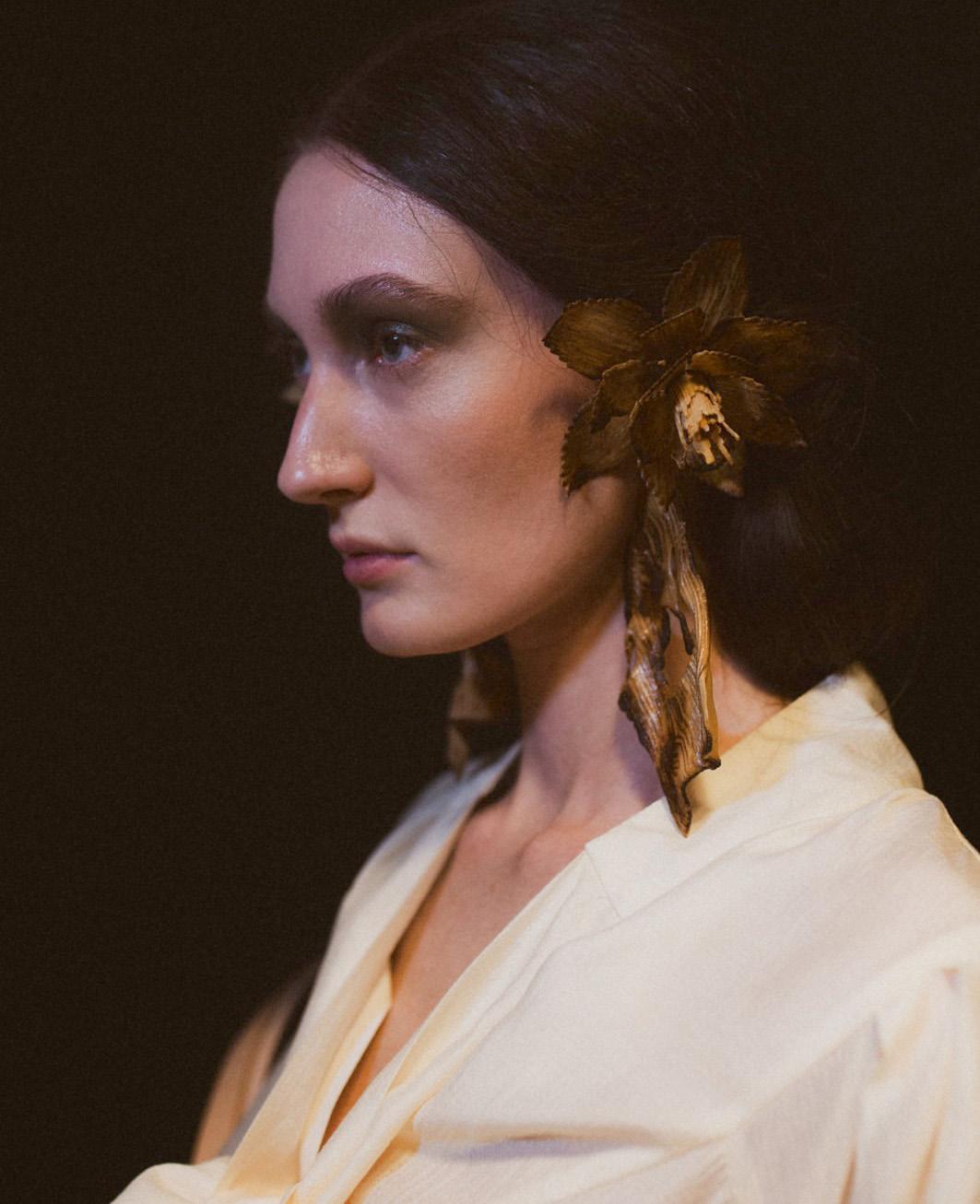
PILAR DALBAT (EARRINGS WERE MADE IN COLLABORATION WITH HÉCTOR






esigner Zhanna Mattiozzi Turns Art Into Fashion, While Preserving the Spirit of Time.
In the quiet Italian town of Teramo, where every stone breathes history, begins the extraordinary story of the Mattiozzi brand. This brand is more than just fashion—it is a love for art brought to life in every line, every seam, and every detail. Founded by Zhanna Mattiozzi, it has become a bridge between past and present, where tradition and modernity merge into one.
Zhanna Mattiozzi grew up surrounded by stories of her ancestors—sculptors and artists whose works still adorn villas and cathedrals across Italy. Vincenzo Sardella, a talented artist and craftsman, created painted ceilings and antique furniture, breathing eternal beauty into them. Meanwhile, Domenico Rolli, his contemporary, sculpted majestic works that can still be seen in the heart of the Vatican. “I feel that their works are not just part of my family—they are part of me. Their art lives within me and inspires my every step,” says Zhanna.
Mattiozzi is not just clothing. It is sculpture made of fabric, paintings drawn with threads. Every piece is unique because it is created by hand. Zhanna employs the draping method, much like ancient masters, ensuring that each garment retains the essence of her inspiration. One of her iconic works is the dress from the Innamorata collection (translated from Italian as “In Love”). Created in a moment of deep emotion, it embodies tenderness and love in a celestial blue hue and refined lines. “My pieces are emotions that I sew into every stitch. They are a way to tell a story through clothing,” the designer shares.
Every Mattiozzi collection is like a journey through Italy. Velvet fabrics evoke the medieval streets of Teramo, airy silks recall Renaissance paintings, and flowing drapery is inspired by the movement of the Mediterranean Sea. “I want my creations to transport people to Italy, so that everyone wearing them feels part of this infinite world of beauty,” Zhanna says.
Mattiozzi is a story about family, passing its legacy from one generation to the next. Zhanna believes that fashion should unite, not divide. That is why she creates family collections in the Family Look style, where each piece maintains individuality but highlights unity. “A mother and daughter dressed in the same style symbolize love and connection. That is what I want to convey through my work,” Zhanna explains. >
Zhanna pays special attention to fabrics. She develops custom materials featuring designs inspired by her ancestors’ frescoes. These fabrics are transformed into scarves, dresses, and jackets that become not just clothing but works of art. Her love for detail is evident in every element—from perfectly selected hardware to impeccable tailoring that flatters every figure.
Zhanna draws inspiration not only from her family heritage but also from the works of great masters such as Christian Dior and Dolce & Gabbana. Inspired by a Dior exhibition, she created corsets that capture the essence of haute couture while blending it with Italian tradition. “I feel like I am working in dialogue with great masters. They inspire me every day,” says the designer.
For Zhanna, fashion is more than clothing. It is a way to preserve art and tradition and pass them on to future generations. She dreams of creating garments that will live in families as heirlooms passed down from mother to daughter. Mattiozzi is not just a brand. It is a story told in the language of art and fashion, where every collection becomes a chapter of a grand Italian novel. Mattiozzi is a love for Italy, embodied in fabrics, silhouettes, and details. It is art you can wear.
text Marina Geisler-Fedan


MODEL @NINOSHA13
PHOTO @SLAV NO
MUA/HAIR @RUSSO _ RUSSO
STYLE @DILOURENS
BRAND @BRANDMATTIOZZI
WWW.MATTIOZZIM.COM

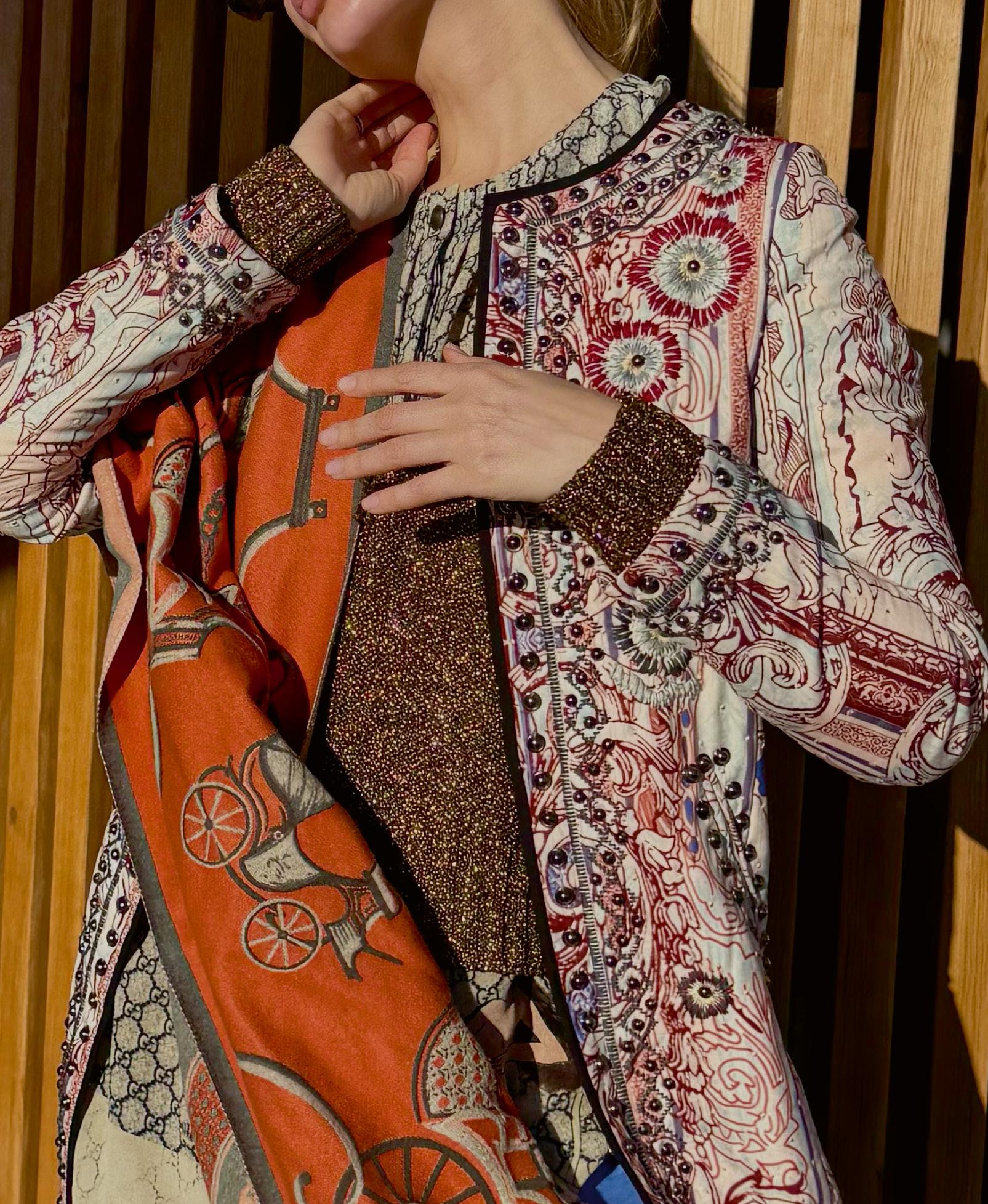
Fashion is more than just clothing; it is a journey through time and space, a dance of traditions and innovations, a language of symbols that connects the past with the future, art with everyday life, and East with West. These two worlds, once separated by oceans and centuries, now merge into a single stream of inspiration, shaping a style that knows no borders. But what drives this eternal exchange? Why does the heritage of the East continue to captivate the West, while European elegance finds its echo in the creations of Asian designers? Perhaps it is the universal pursuit of beauty, the shared human desire to express identity through garments, or the fascination with the unknown that fuels creativity across cultures.
The East has always mesmerized the West with its mystery, its refined aesthetics, and its mastery of storytelling through details. Take, for example, the humble hairpin. In China and Japan, it was never just an accessory—it was a status symbol, a charm, a work of art. Gilded, encrusted with jade and pearls, these intricate hairpieces not only adorned hairstyles but also revealed the wearer’s social rank and personal history. The West adopted this element, transforming it into a symbol of elegance. Today, hairpins appear in the collections of major fashion houses, reimagined in minimalist and avant-garde designs, crafted from modern materials. They are no longer just ornaments but bridges between cultures and epochs. Yet, this cultural dialogue is not one-sided. Pajamas, originally from Persia and brought to Europe by British travelers, evolved from sleepwear into a statement of high fashion. Today, silk pajama sets are worn not just in the bedroom but on red carpets, turning comfort into couture.
Some elements integrate so seamlessly into another culture that their origins become almost untraceable. Take, for instance,
Japanese tabi—split-toe socks once worn by samurai and laborers. In the modern world, they have become a staple of avantgarde fashion, inspiring brands like Maison Margiela to create the now-iconic “hoof boots.” Or consider flip-flops—once the simple footwear of Southeast Asian farmers, now a global summer essential. Luxury houses such as Chanel and Hermès have transformed them into symbols of effortless elegance. The silk scarf, too, has traveled far. Once a mark of nobility in China, it became an icon of Parisian chic and is now embraced worldwide. No longer tied to a single culture, it is a universal emblem of sophistication.
The 2025 runways in Paris and Milan reaffirmed that fashion is, above all, an art of synthesis. Jean-Paul Gaultier presented looks inspired by Japanese kimonos but cut with an avant-garde edge. Meanwhile, designers from Korea and China drew upon Western architecture, crafting futuristic silhouettes reminiscent of Bauhaus masterpieces. This exchange between East and West transcends mere fashion. It tells the story of a world where boundaries are fading. Where a Chinese designer finds inspiration in Versailles, and a French couturier is drawn to Zen philosophy. Where heritage intertwines with innovation, shaping the fashion of the future.
Every time we drape a silk scarf around our shoulders, fasten our hair with an ornate pin, or wear a pajama suit beyond the bedroom, we become part of this great narrative—one in which East and West are no longer opposites but two magnetic poles of the same artistic force.
Fashion is not just about garments. It is a language of civilizations. And perhaps the most beautiful thing about it is that we all understand it—without words.
text Olga Smirnova




step onto the street, and my footsteps sound different depending on where I go. In the narrow alleys of old Munich, among centuries-old brick walls, I hear the confident click of my leather boots—just as precise as the city’s Gothic architecture. But the moment I enter a sunlit atrium, where fine fabrics whisper in the air, my movements become softer— like an echo of Moroccan bazaars, steeped in the scent of saffron and rose oil.
I am East and West, their crossroads. Their experiment. Their eclecticism.
The West is obsessed with precision. A perfectly tailored suit, sharp-cut lines, a strict, calculated silhouette. A world where every movement is predictable, where a blazer speaks for you before you even open your mouth.
The East, on the other hand, flows. Soft, wind-dancing folds, translucent layers that hint rather than reveal. A mystery to be explored rather than a statement to be declared.
I see this every day in the showroom. Clients come to push boundaries, yet they crave freedom. They want structure but without confinement. They seek balance between contour and shadow.
When I put on my abstract-striped hat, I think of Tokyo—a city where tradition and futurism exist on the same plane. When I fasten my shimmering blazer, I am transported to New York— a city that dares to be itself, reflecting millions of lives in the mirrored facades of its skyscrapers. And when my
hands glide over the silk of my trousers, I think of Marrakech—its wavering, mirage-like lines dissolving into the air. I do not simply dress. I quote. I engage in a dialogue with those who came before me and those who will come after.
ECCENTRICITY IS NOT A PROVOCATION—IT’S AN INVITATION
Some call me eccentric. They see the shine of my garments, my boldness in mixing the unmixable, and they assume it is a provocation. But no. Eccentricity is not rebellion. It is an invitation. An invitation to reflect:
→ Why is a tailored suit a classic, but a brocade robe considered exotic?
→ Why do we fear color in our daily lives yet long for it on special occasions?
→ Why shouldn’t silk and steel exist in the same look?
When I put on my blazer, I make a statement: Style is freedom. Freedom to merge eras and continents. Freedom to live in a world where East and West have already become one. Freedom to be myself.
With reverence and inspiration Yours, Edem


he doesn’t just paint—she creates a world of emotion, color, and light, where every canvas is an intimate revelation. Her art fuses realism, pop art, and glamour, but at its core, it is about femininity—bold, multifaceted, and luminous from within.
The sea and the woman—two forces that inspire her. The sea is infinite, ever-changing, alive, speaking in the language of light and shadow. Her female figures embody strength, sensuality, and grace— an unstoppable energy.
“I want my paintings to inspire. To bring joy. To remind every woman: you are unique, you are free, you are meant to shine.”
Anastasia Yanchuk’s art is more than just paint. She incorporates textures, Swarovski crystals, gold leaf, mosaics, transforming her works into tactile masterpieces. These are paintings you don’t just look at—you feel them.
She experiments, breaks boundaries, and creates art that speaks to the viewer.
Her works are made for high fashion—silk scarves, accessories, even jewelry collections. She dreams of collaborating with Dior, Saint Laurent, Cartier, bringing her art to life through fabric and precious stones.
“Cartier is not just jewelry. It is stories told in gold and light. The idea of merging my paintings with fine jewelry is a dream I long to create.”
Her work radiates strength, confidence, and inspiration. Through color and form, she speaks to the world, creating art that is not just beautiful, but electrifying.
“Every artist leaves a mark on this world. I want mine to be bold, brilliant, and unforgettable.”
Anastasia Yanchuk is an artist who isn’t afraid to shine. And she shares that light with the world.
text Marina Geisler-Fedan



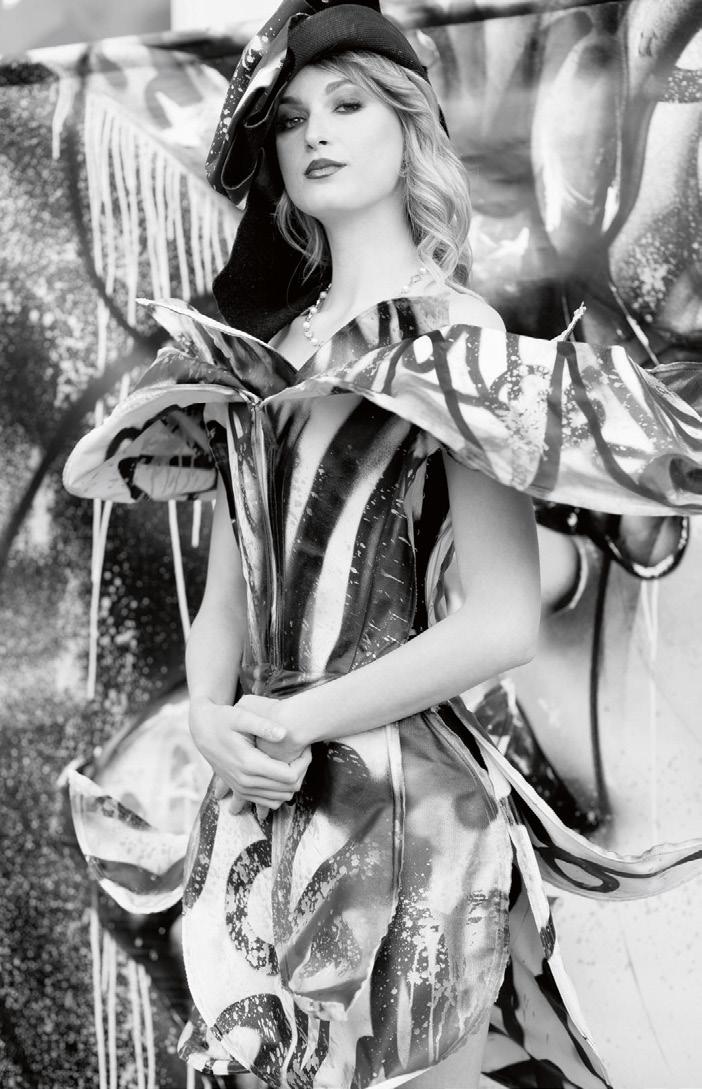
ANASTASIA YANCHUK, ARTIST

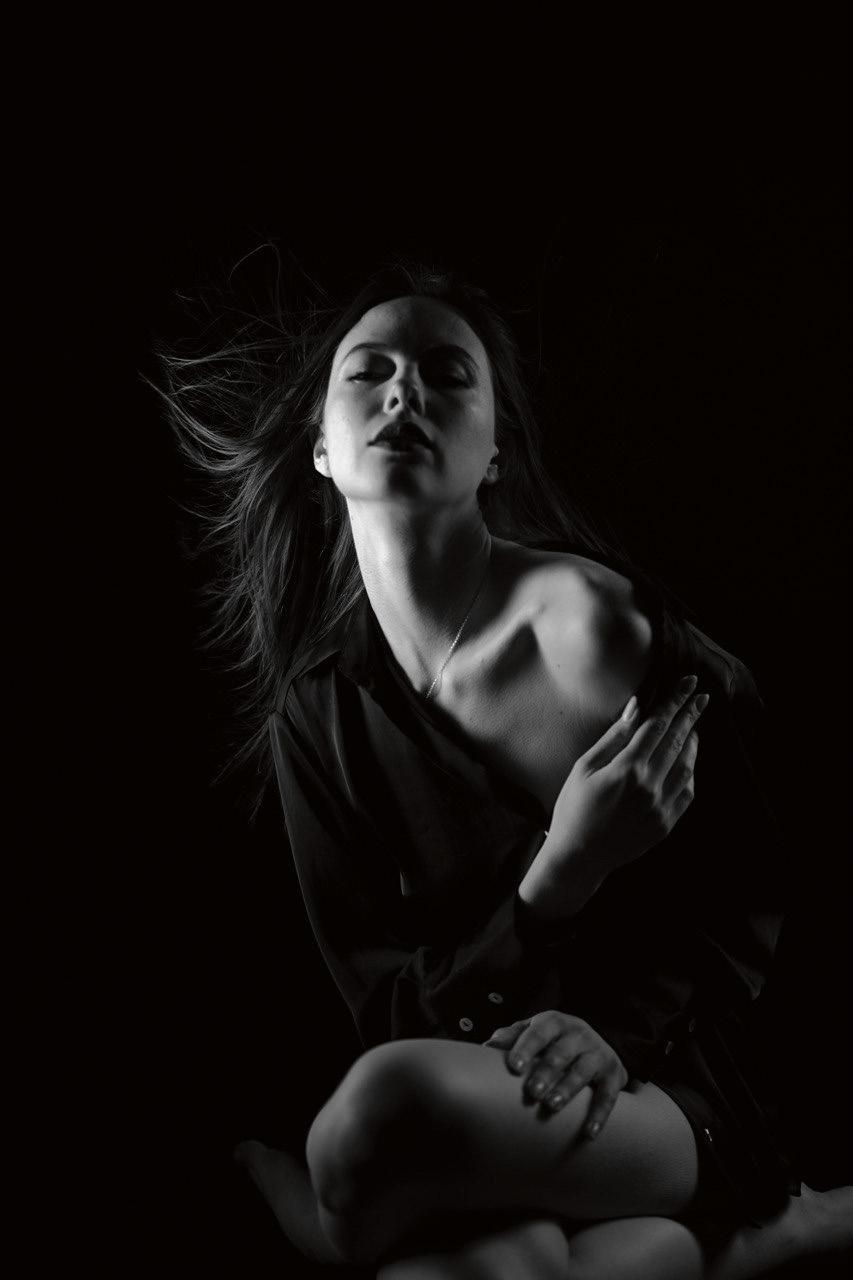
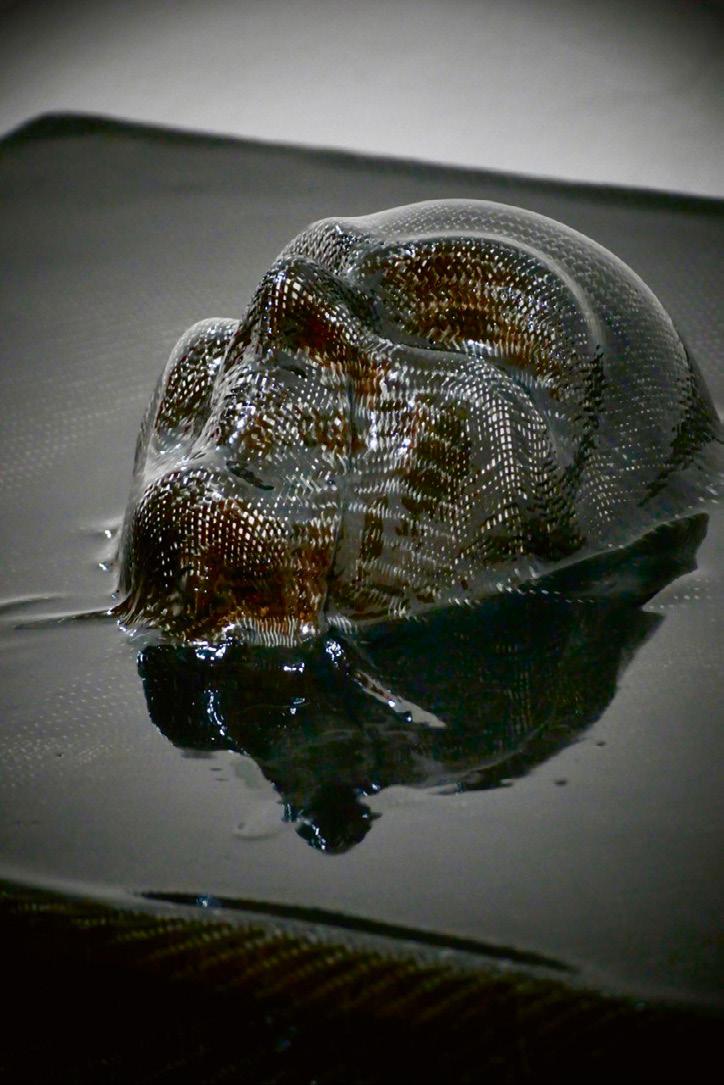
In the spring of 2025, Paris became more than just a fashion capital — it turned into a realm where fashion, art, and technology merged into a visionary experience. The Paris Fashion Air exhibition, held alongside Paris Fashion Week, was not merely a display but a transcendent encounter that redefined the boundaries of creativity.
In a legendary setting, artists, designers, and innovators gathered to present their visions where culture, form, and emotion intertwined. This was not just an exhibition — it was a manifesto of a new era, where the body, emotion, and intellect serve as the key mediums.
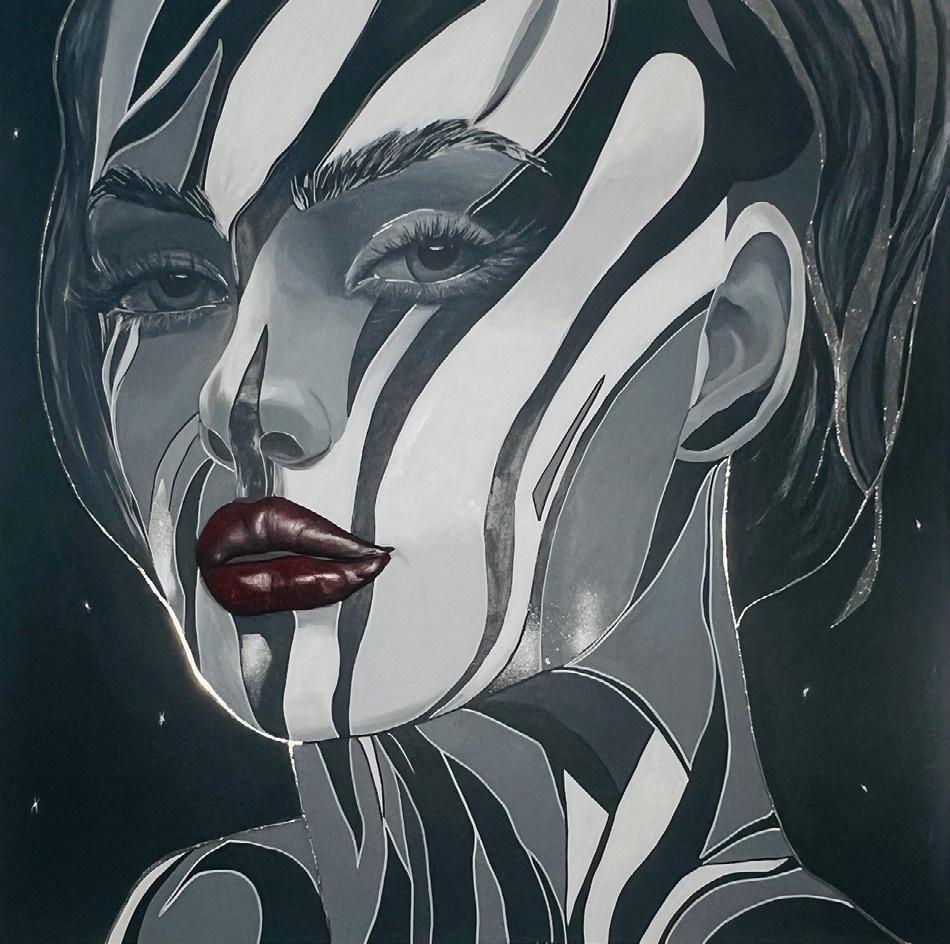

LINA KHEI, a pioneering contemporary artist, captivated the audience with her project ANIMO, which transformed human emotions into digital art in real time. By combining biometric data and generative AI, she explored the invisible realm — art born from pure emotion.
Swiss photographer JANIH CH. LÜTHI offered a poetic reflection on femininity with her project “Women’s Body Language.” In her black-and-white images, gestures become silent narratives— stories of grace, strength, and the delicate art of being oneself.
LANA RITTER brought visitors into a blooming dream world. Her paintings, created on wooden panels, combine pop art and abstract floral forms, expressing the energy of nature and the feminine spirit in each layered brushstroke. Her works, already part of collections worldwide, continue to evolve toward sculpture and spatial expression.
SERGIO DURANTE, both an artist and engineer, introduced a futuristic vision where art is born from materials with history — like carbon fiber reclaimed from Formula 1 cars and aircraft. His sculptures embody a dialogue between technology and poetry, strength and lightness — a declaration of conscious beauty.
ANASTASIIA YANCHUK is a visual artist and photographer who blurs the boundaries between fine art and fashion. Her works capture femininity with bold intimacy — from expressive lips to intricate gestures. In this issue, she unveils her artwork “Artistry Unveiled,” where color, texture, and emotion converge. With her signature red tones and sensual close-ups, Anastasiia transforms beauty into a modern visual poem.
Paris Fashion Air is more than an exhibition — it is a flight of imagination. Each work speaks a universal language: fashion and art are not luxuries, but the evolving voice of the human soul.
Paris. The city where shadows whisper secrets of couture, where time folds itself into the pleats of a silk gown, where fashion is not worn—it is felt.
This season, the rhythm of Paris Fashion Week pulsed beyond the grand avenues and gilded salons. Somewhere between the formalized spectacle and the unscripted, something truly magnetic took shape. Paris Fashion Air. More than a show, more than a concept—an unraveling dream, stitched together by those who refuse to be ordinary.
There are fashion weeks. And then there is what happens in the margins—the spaces where creativity is raw, electric, unfiltered. Paris Fashion Air is not a place; it is an atmosphere, a frequency. This season, it found its home in La Maison Marois, an elegant mansion where walls breathe stories and chandeliers flicker like stars caught in time. The moment you cross the threshold, the rules of reality shift. Here, a runway is not a straight line—it bends, dissolves, reappears. Models are not muses; they are poets in motion.
Backstage, everything is alive. A fleeting touch of a seamstress adjusting a hem, the metallic click of a designer’s nervous lighter, the intoxicating scent of fabric—brocade, leather, crushed velvet, anticipation. Then, silence. The lights drop. A heartbeat of darkness. And then—the world exhales.
DESIGNERS WHO SCULPT TIME
This was not fashion. This was alchemy.
• DANA ALMULLA (Qatar) opened with “Voice of Change,” a collection that felt like an echo of history reclaiming itself—a metamorphosis of silk, armor, and revolution.
• ELFIDAS ATELIER (USA) conjured a bygone era, when hats spoke louder than words and royalty was defined by silhouette, not bloodline.
• SHEILA VICENS (USA) took discarded fabrics and whispered them into new life—ghosts of past garments reborn as masterpieces.
• KATERYNA OLEK (Mexico) painted love stories in white, each wedding gown a frozen sonnet, each stitch a vow.
• MAISON VEMIAN (USA) sent cinematic dreams down the runway—red carpet mythology stitched into reality.
• VAL BY VALERIA CROATTO (Italy) proved that true artisanship does not need embellishment; it needs precision, a steady hand, and an old soul.
• THE MUSE (Armenia) played with contrast—soft leather like liquid shadow, crystallized embroidery like frozen light.
• VERONIKA JEANVIE (France) wove words into fabric, pull-
ing her inspiration from poetry—delicate verses stitched into lace, whispers hidden in silk.
• IHF ATELIER (Vietnam) closed the evening with a celestial procession—35 gowns that did not move; they floated, they transcended.
No one in the audience breathed. Or if they did, they did so carefully, not to break the spell.
Paris Fashion Air is not a runway. It is a thought, a feeling, a question. It does not tell you what fashion is—it asks you to reconsider everything you thought you knew.
This season, the event collaborated with Katerina Frumina, the visionary behind La Magnétique, who helped shape this cinematic hallucination of couture and art.
Over 1,500 guests filled the space—not just to watch, but to become part of it. Because here, you are not an observer. You are a participant in a fleeting, untouchable moment.
There are collections that exist in closets. There are collections that exist in history. And then, there are collections that exist only in memory. Paris Fashion Air does not leave behind fabric or garments—it leaves behind impressions. It stains the subconscious like spilled ink. It vanishes the moment the last model disappears into the darkness, but somehow, it remains forever. Because true fashion does not demand to be seen. It demands to be felt.
Text Marina Geisler-Fedan Photography: Backstage — Amiko Beridze @green.graphy, Runways — Sheng Jun @pk14_pk14
Media partner: magazine Fedan Fashion&Art www.parisfashionair
Scan the QR code to access the







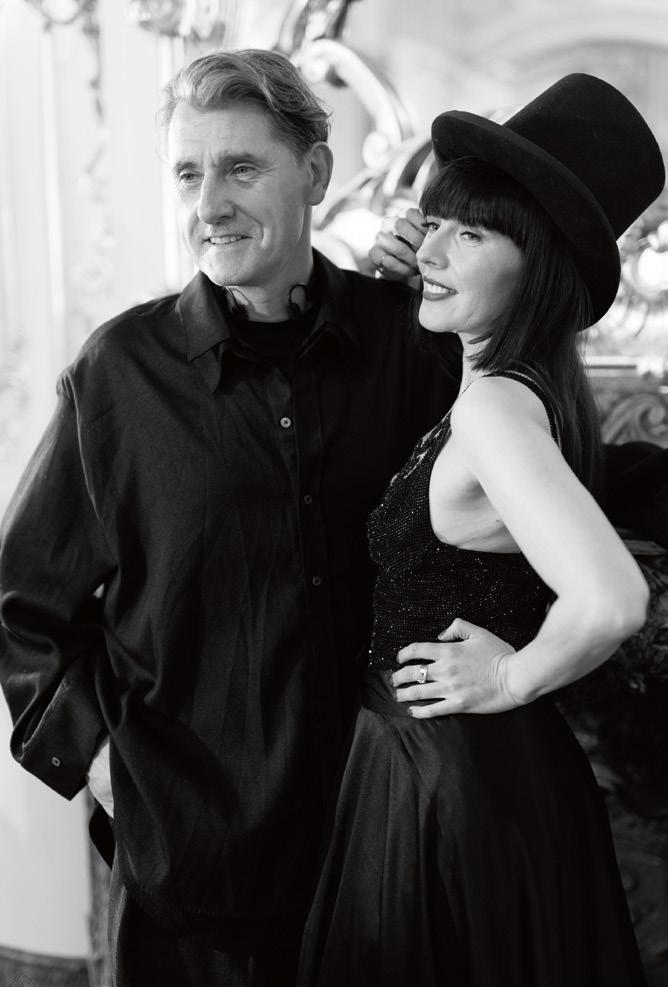

Scan the QR code to access the
OTHER PAINTINGS
BY MARINA GEISLER-FEDAN
DIALOGUE BETWEEN FASHION, ARCHITECTURE & ABSTRACT EXPRESSIONISM
Paris is my canvas, my inspiration, my obsession. As an artist and editor, I see the city not just as a backdrop but as a living, breathing entity—woven from centuries of elegance, rebellion, and reinvention. This collection is my way of capturing its soul, where fashion, architecture, and abstract expressionism merge into a visual narrative. Each brushstroke reflects the rhythm of the metropolis, the whispers of the past colliding with the pulse of the present. Silhouettes dissolve into facades, textures echo fabrics, and colors bleed like memories onto stone.
When I paint, I feel the weight of Parisian architecture—the neoclassical columns, the intricate ironwork of Haussmannian balconies, the labyrinth of Montmartre’s streets. These elements seep into my work, becoming part of the layered story I tell. In this series, the lines of couture blur into the bones of the city. Fashion is architecture for the body, and architecture is couture for the streets. The play of light and shadow, of aged textures and golden embellishments, mirrors the essence of a Parisian silhouette—structured yet fluid, classic yet avant-garde.
Faces emerge and disappear—fragmented, elusive, like fleeting glances in café windows. They are not portraits; they are echoes. Shadows of elegance. Traces of conversations left unfinished. I distort them intentionally, layering marble cracks over expressions, blending newspaper clippings with eyes that seem to watch but never reveal. It is my way of capturing the ephemeral nature of beauty—fashion fades, cities transform, art remains. Red lips and bold lines stand defiantly against raw textures, just as haute couture stands against the industrialization of time.
Every detail in these paintings is an extension of my love for fashion. The layers of paint mimic the movement of fabric — the weight of tweed, the sheen of satin, the airiness of chiffon.
Gold is a signature—it threads through my work like jewelry on a Parisian gown. Bright flashes of crimson and noir evoke the timeless codes of Parisian fashion, from the defiance of Saint Laurent’s tuxedos to the quiet rebellion of Coco Chanel’s minimalism.
My work is not meant to be seen in a single glance. Like Paris itself, it demands exploration. The fragments of text—faded headlines, whispers of street signs—are clues. They tell stories of love, revolution, and fleeting encounters.
I want the viewer to get lost in the layers, to discover meaning in the negative space, to let their own memories intertwine with the strokes on the canvas.
This collection is my ode to fashion, architecture, and the poetry of the city. It captures a Paris that is both timeless and transient—a city that lingers in reflections, footsteps, and the folds of a perfectly draped coat. In every brushstroke, I feel the heartbeat of the metropolis, the hum of couture ateliers, the romance of an evening walk along the Seine.
Paris is not just a place. It is a state of mind. An unfinished masterpiece. A love affair between art and time. “Love elevates us, and we elevate love through art.”
text Marina Geisler-Fedan
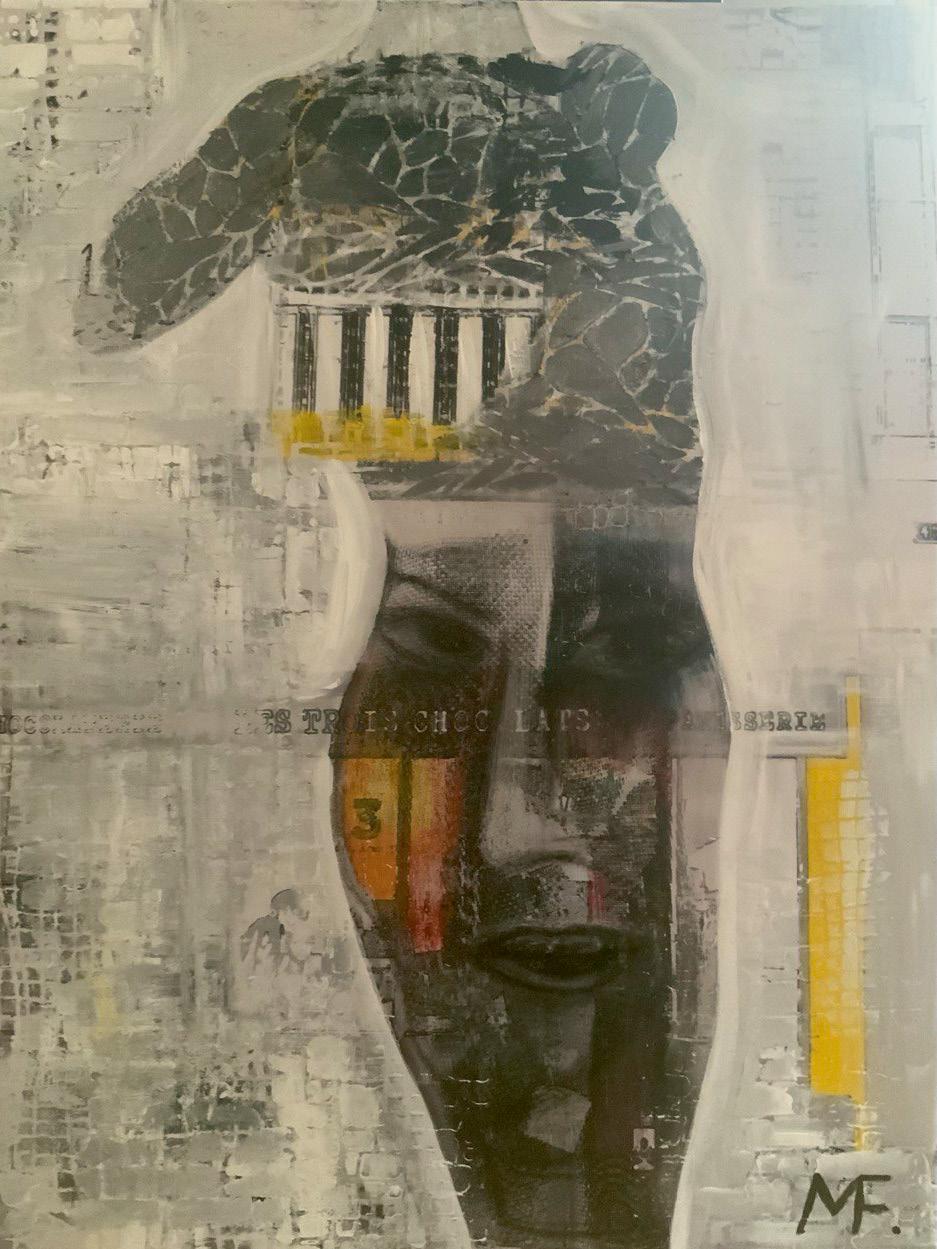
CREATIVE DIRECTOR AND FOUNDER: Marina Geisler-Fedan
GRAFIC DESIGN AND LAYOUT: Vita Virulaine
WRITERS:
Marina Geisler-Fedan Ruslan EV Adiya Batyr
Mandrik Maria
Alina Krukova
Olga Smirnova Edem
PRINTED: BluPrintAG
FOTOGRAPHER: Marina Geisler-Fedan
THANKS TO LIFE
Instagram: @fedan_fashion_art Blog: www.fedanfashionandart.com
Scan the QR code to access the
OUR BLOG SUBSCRIBE
